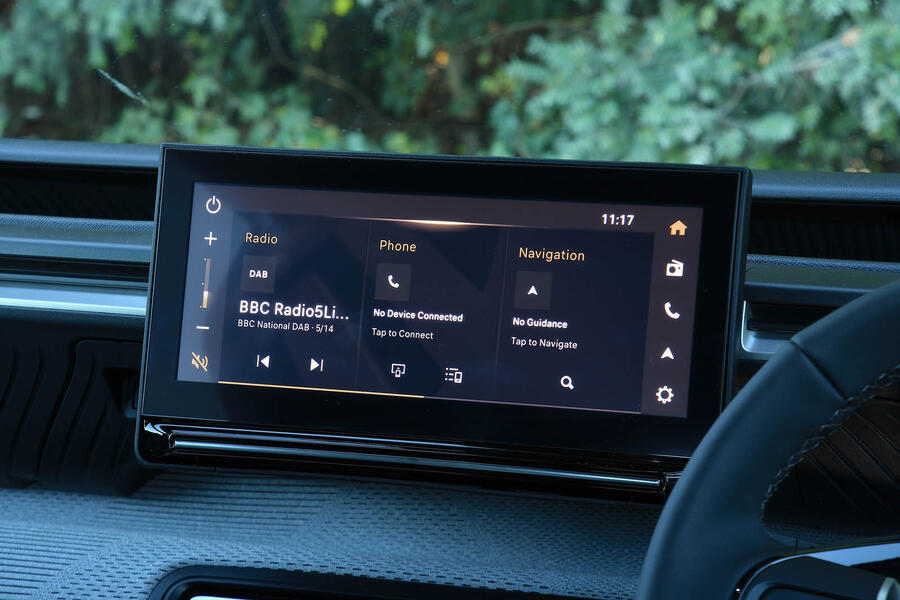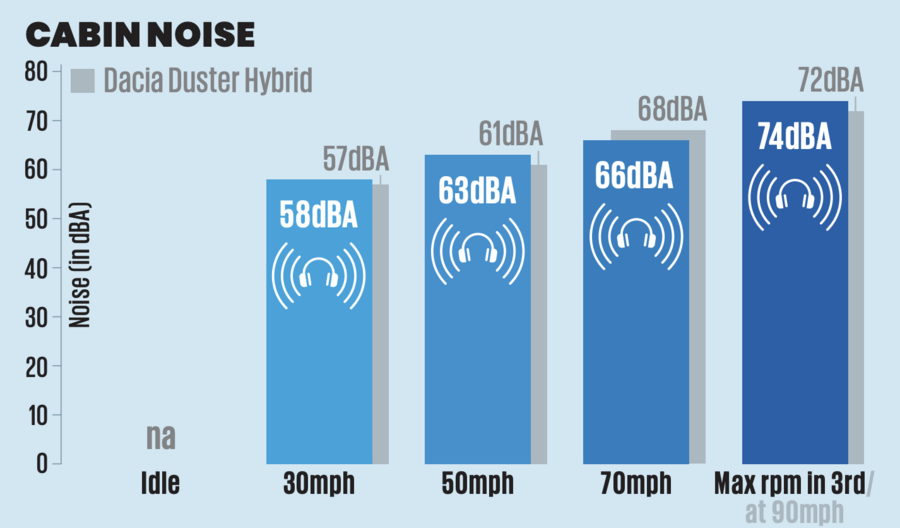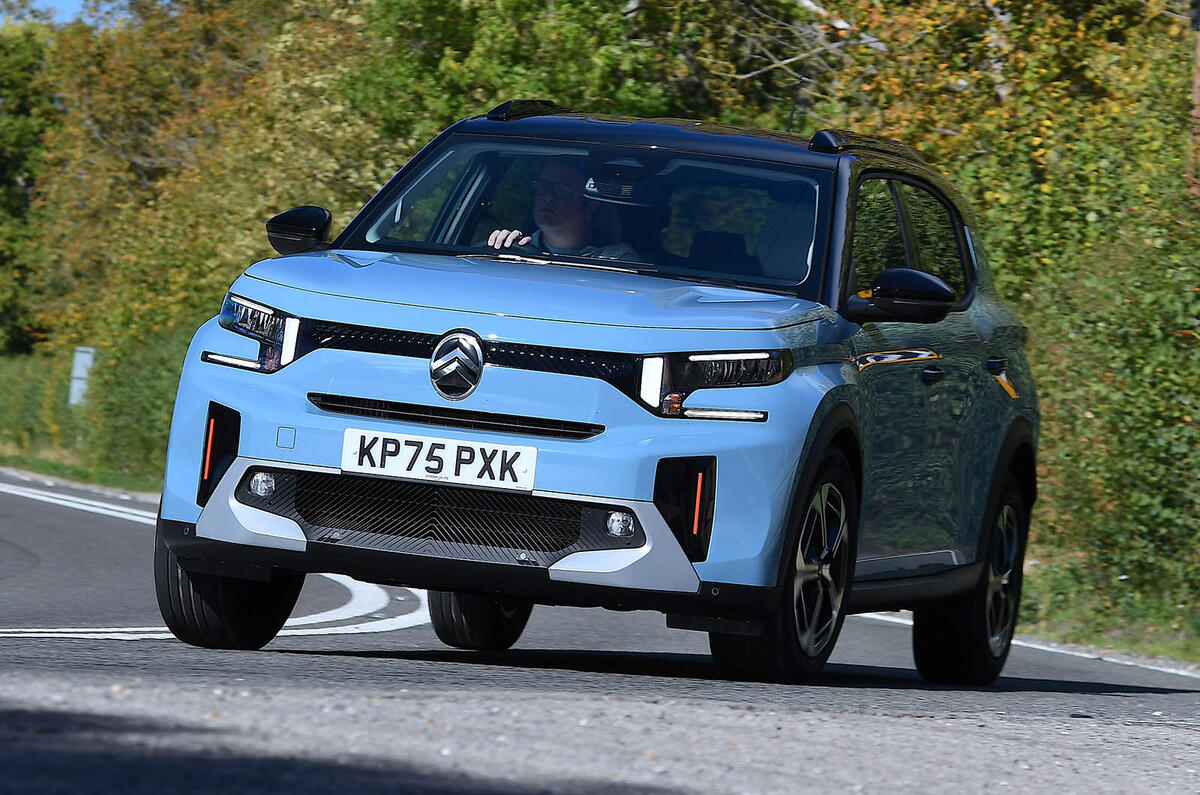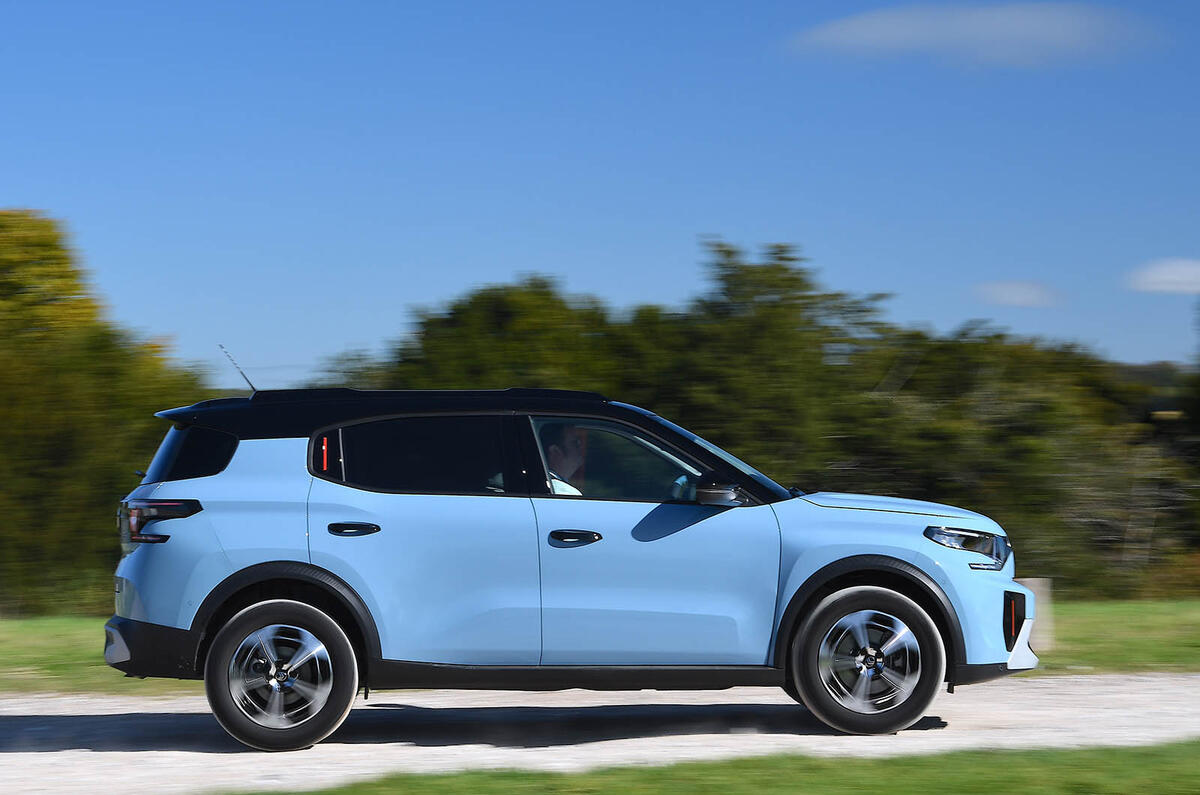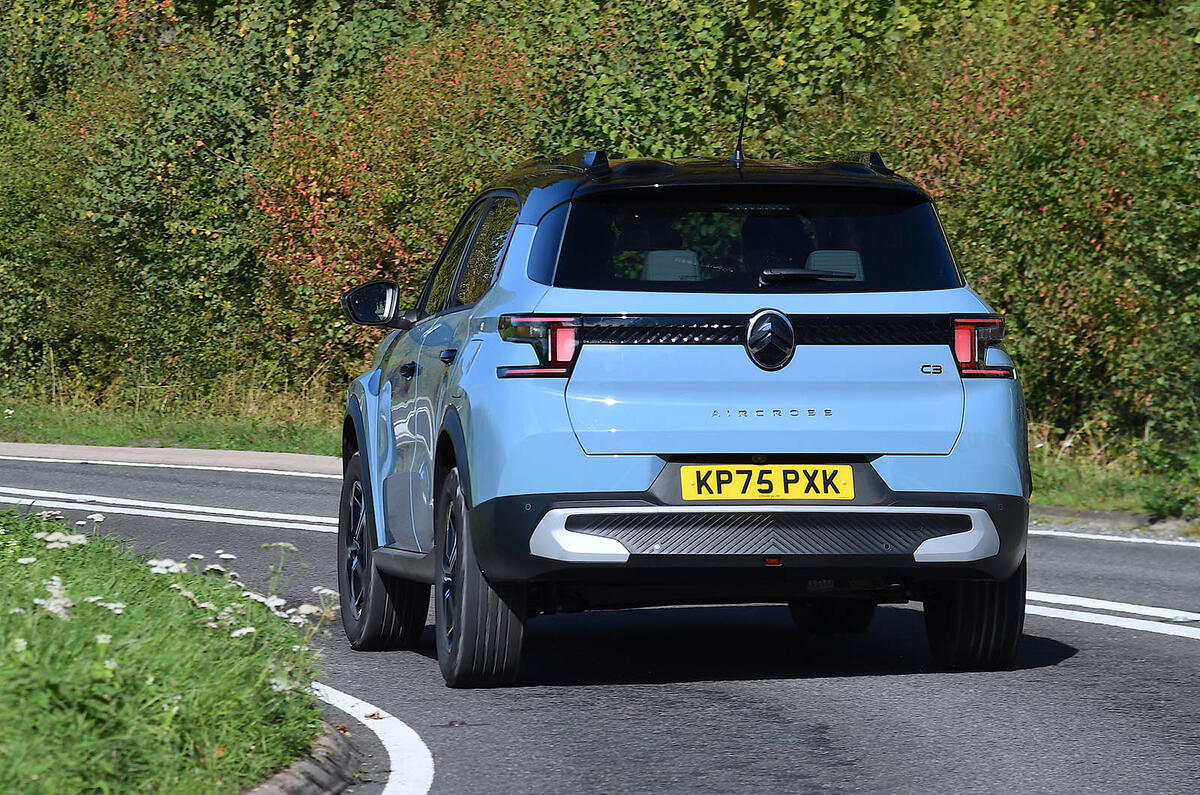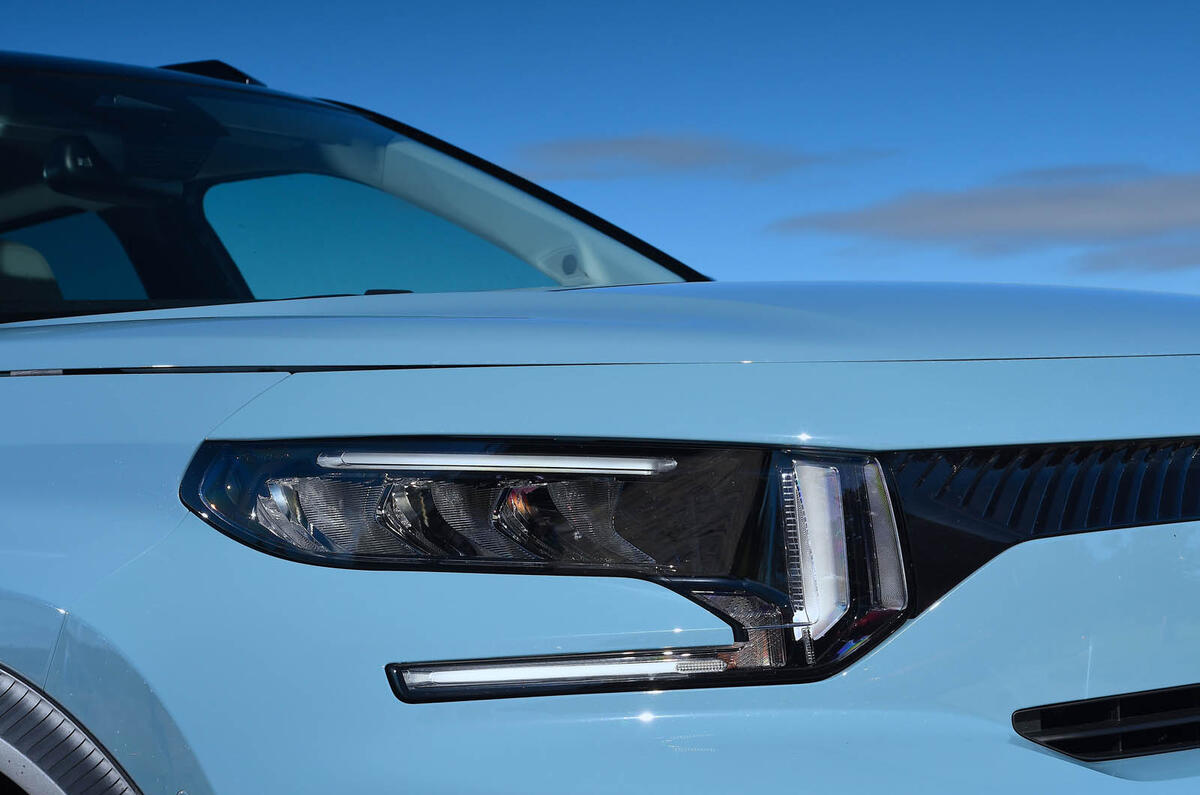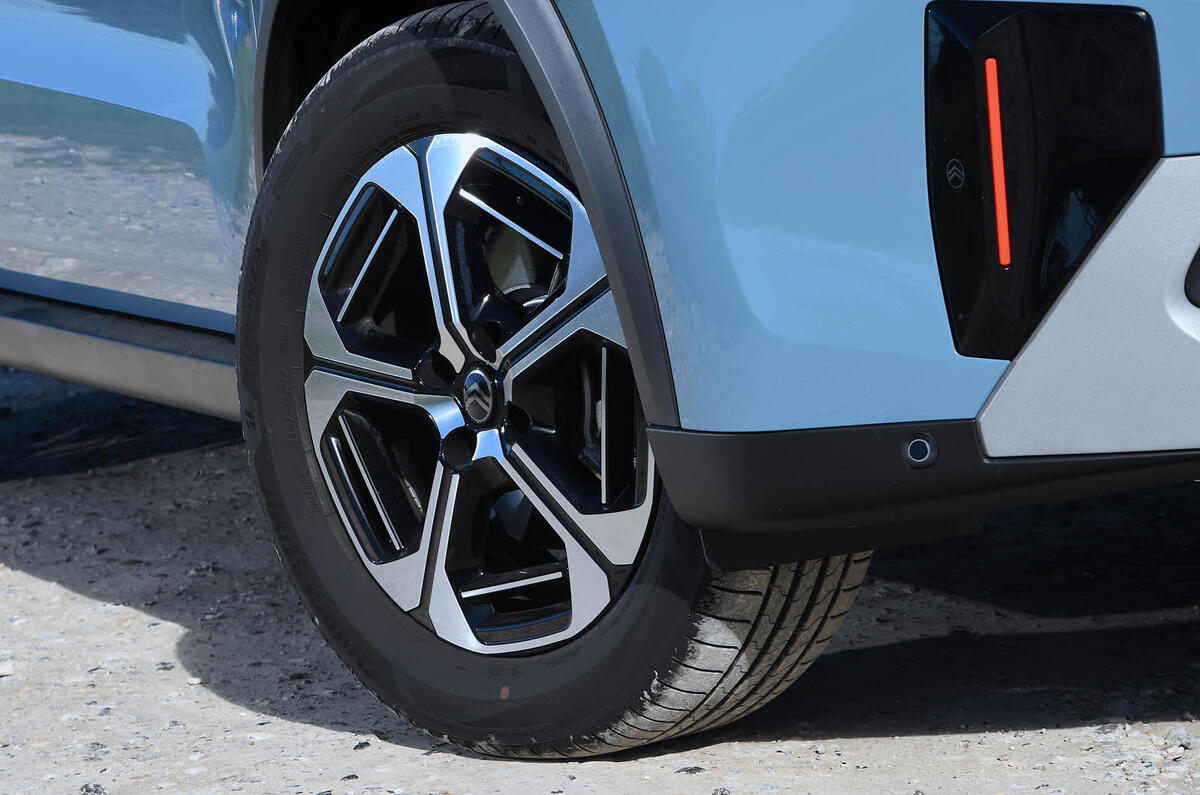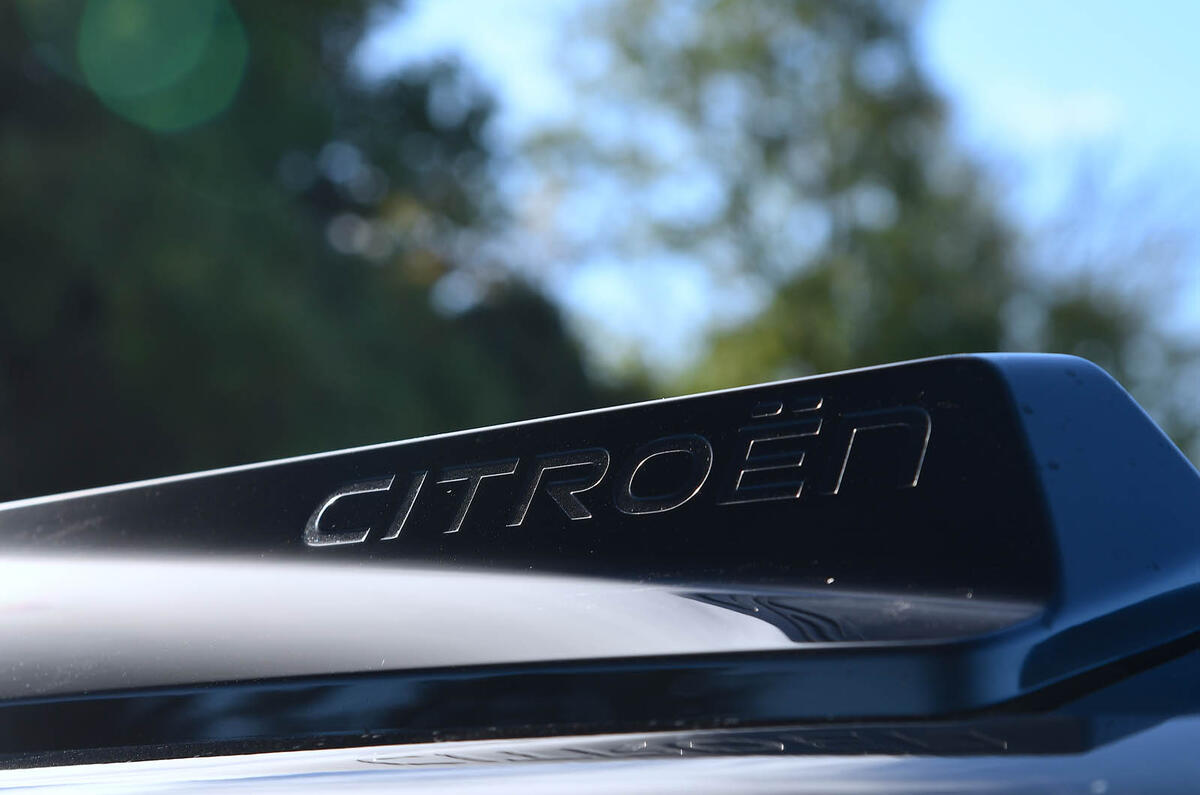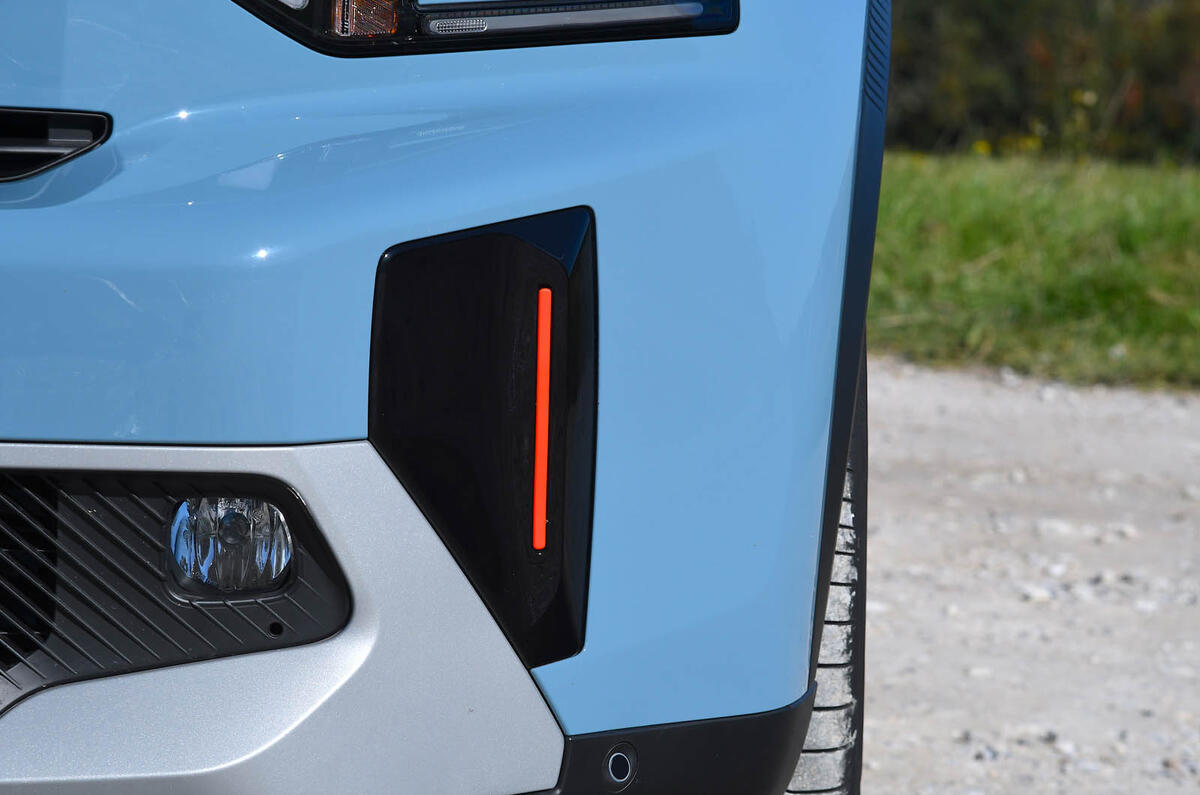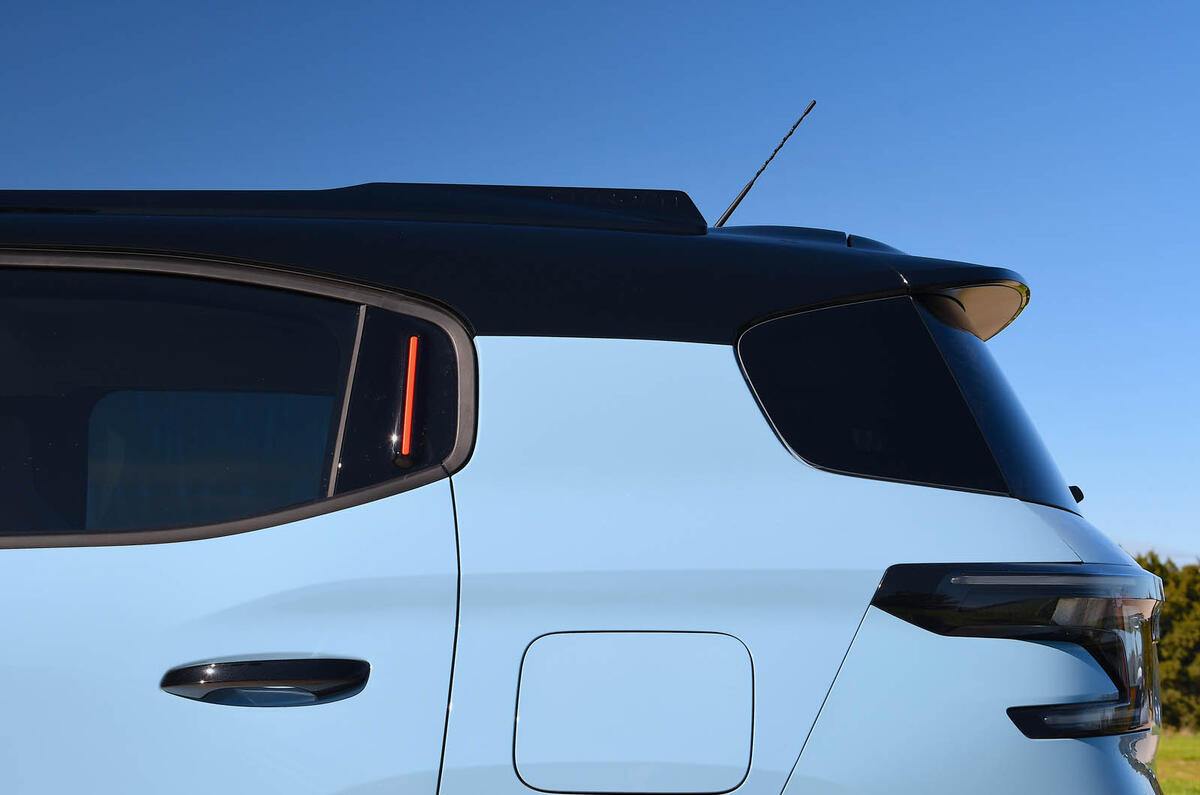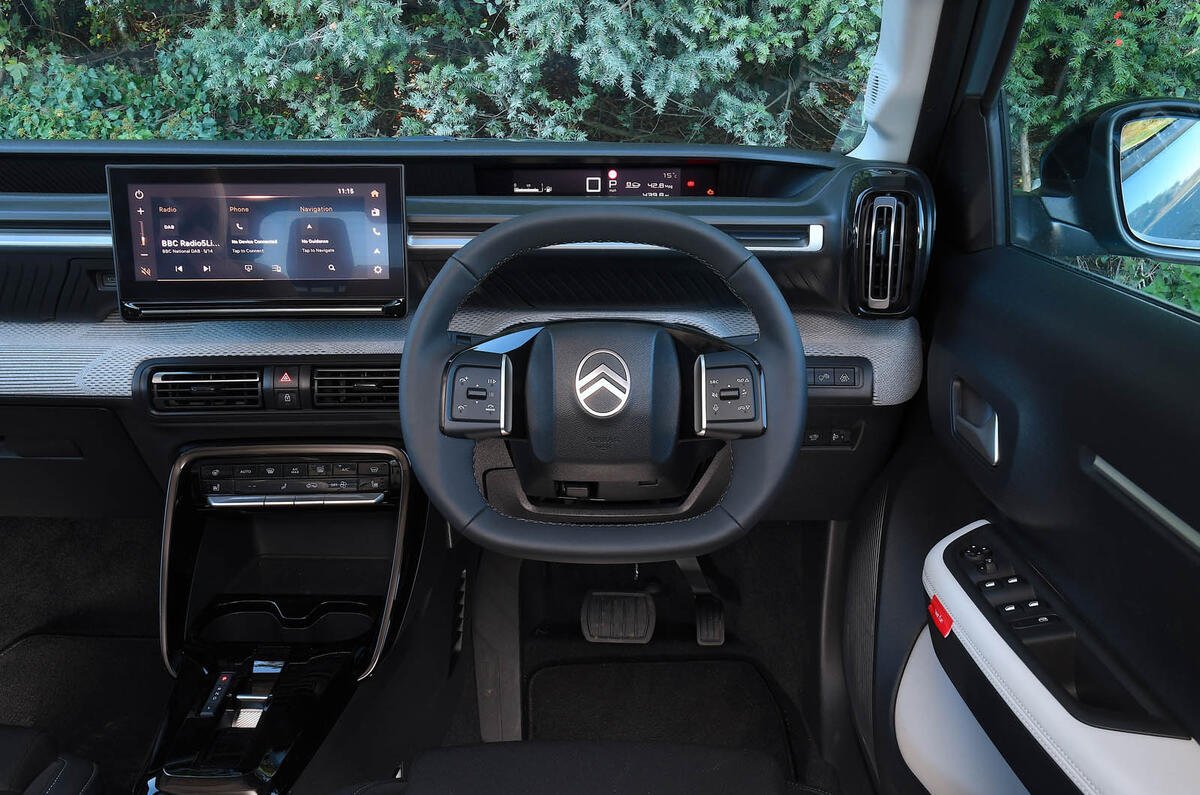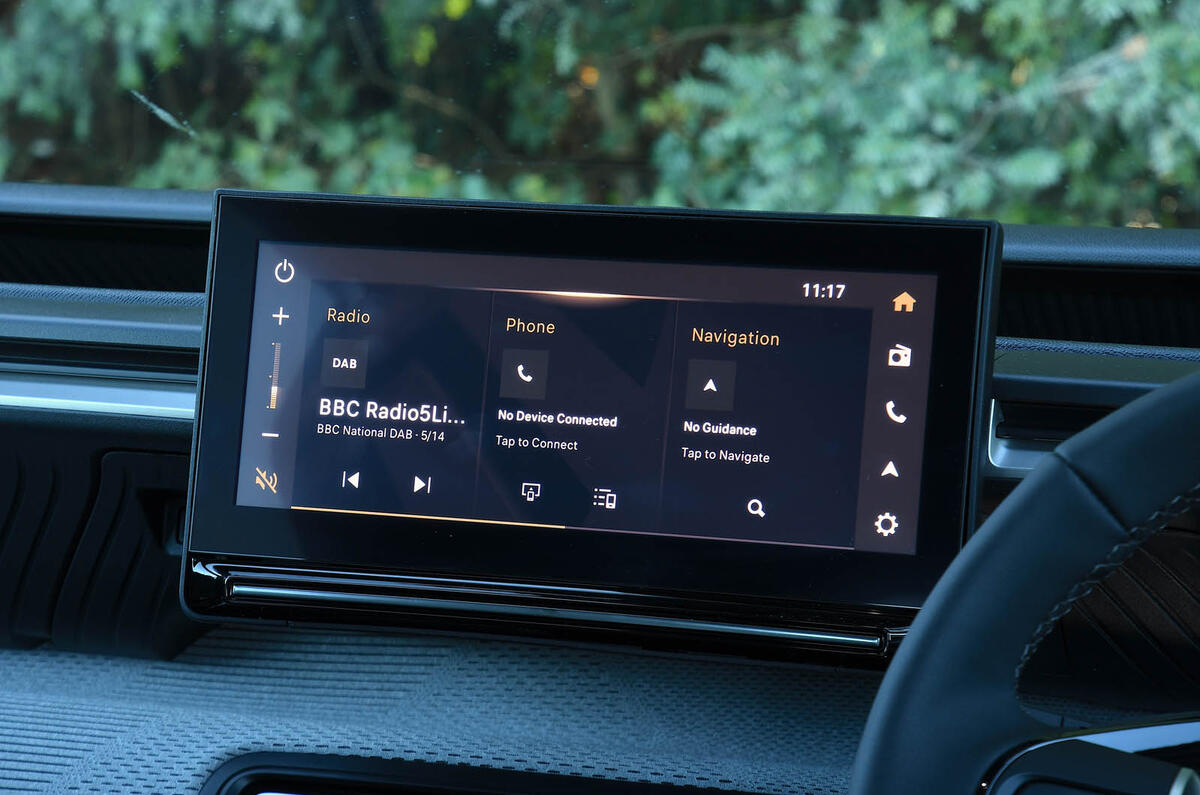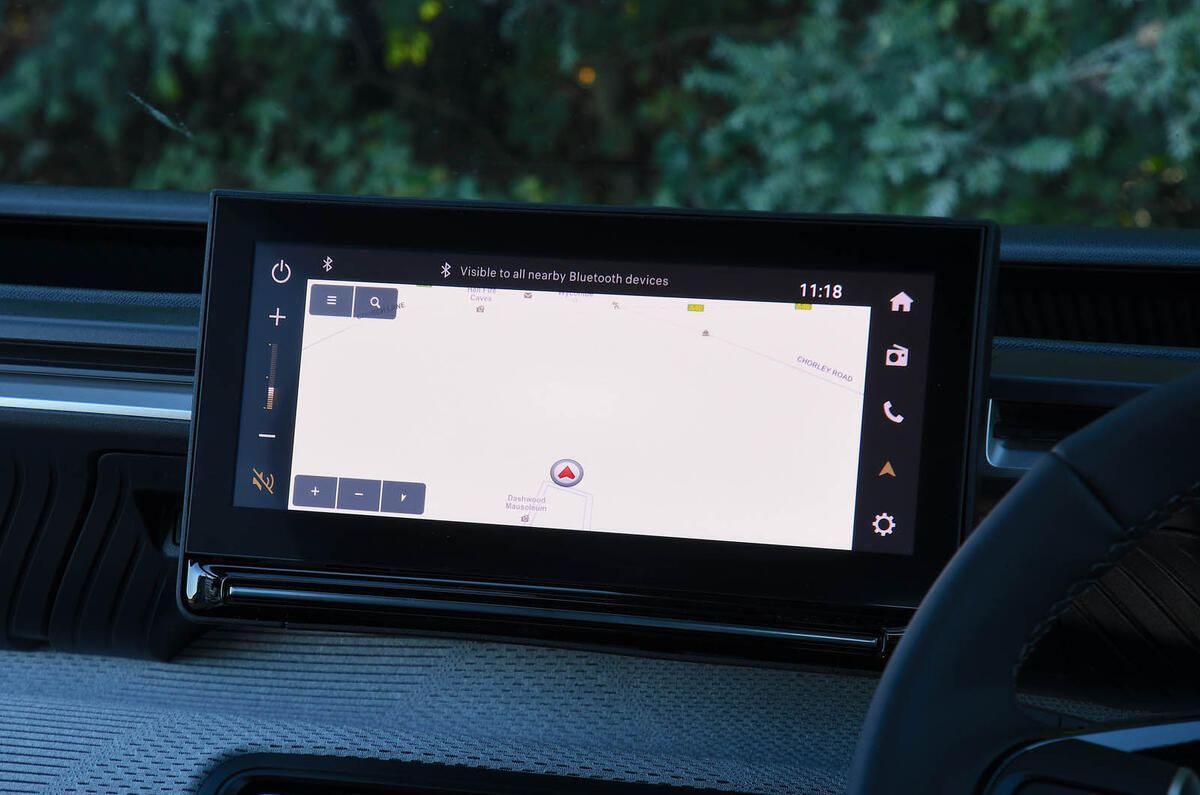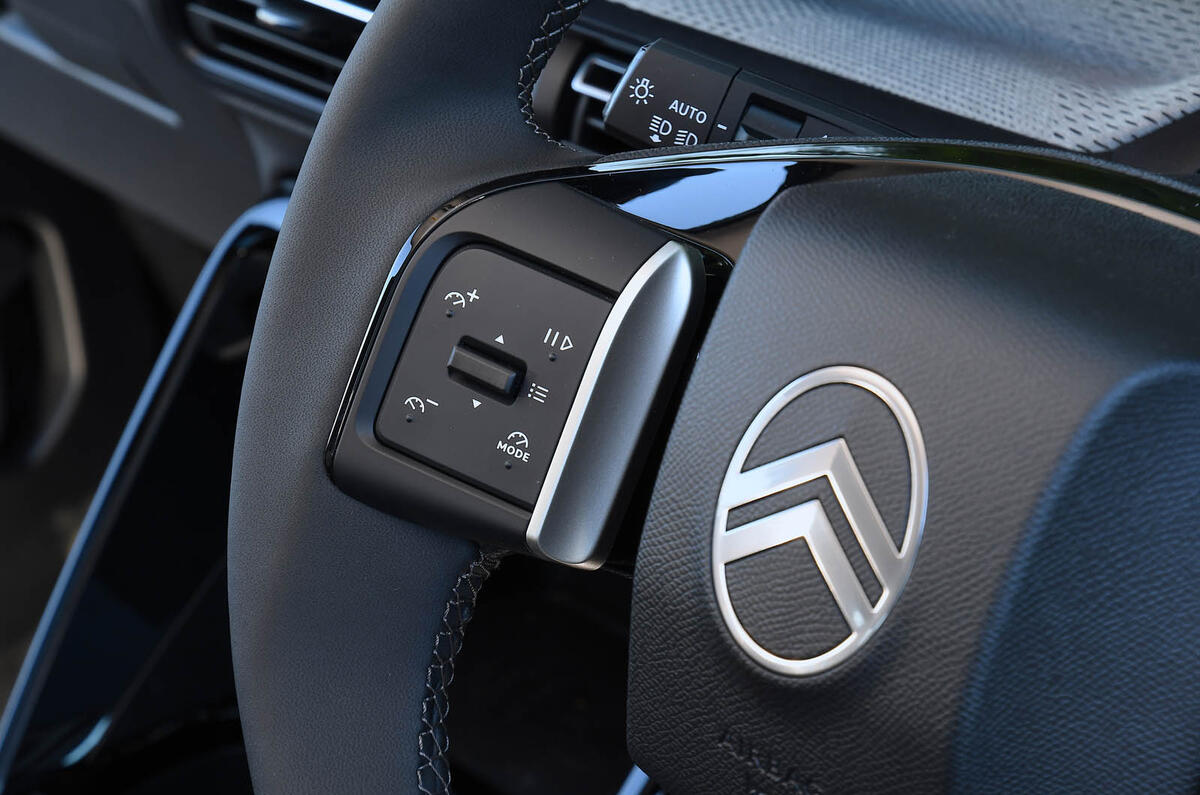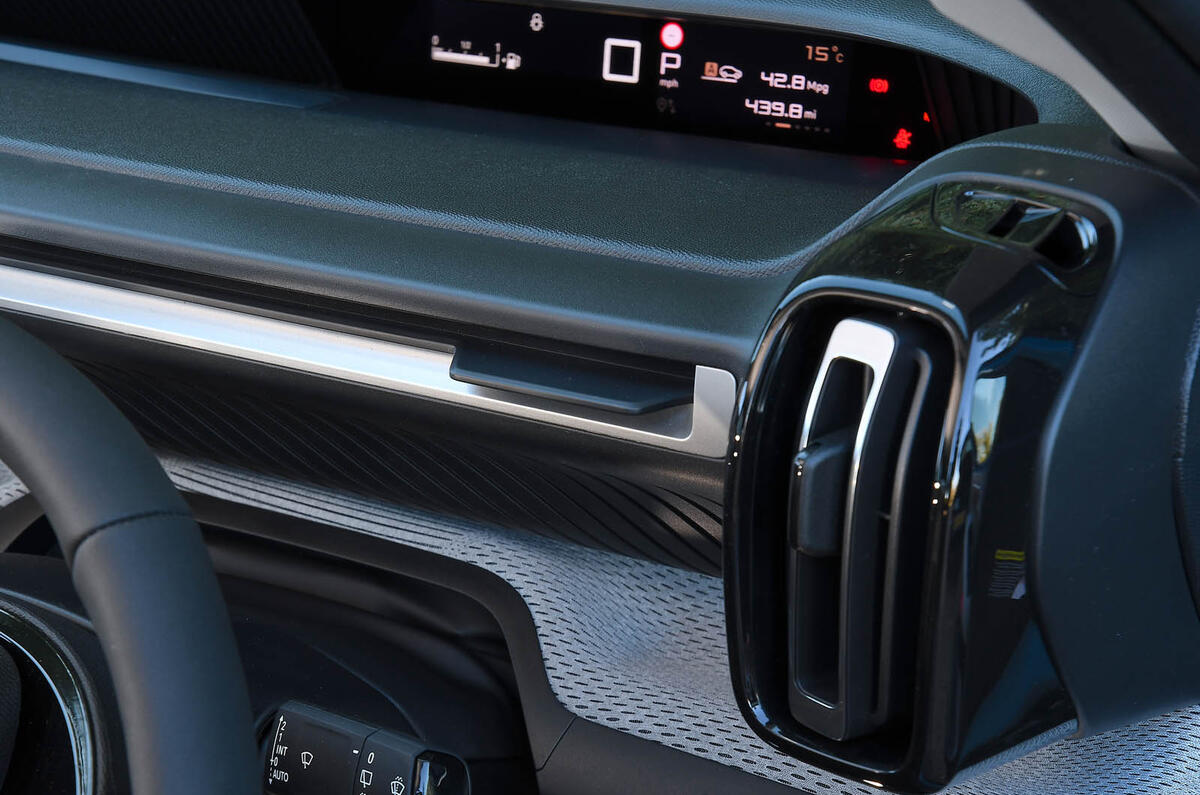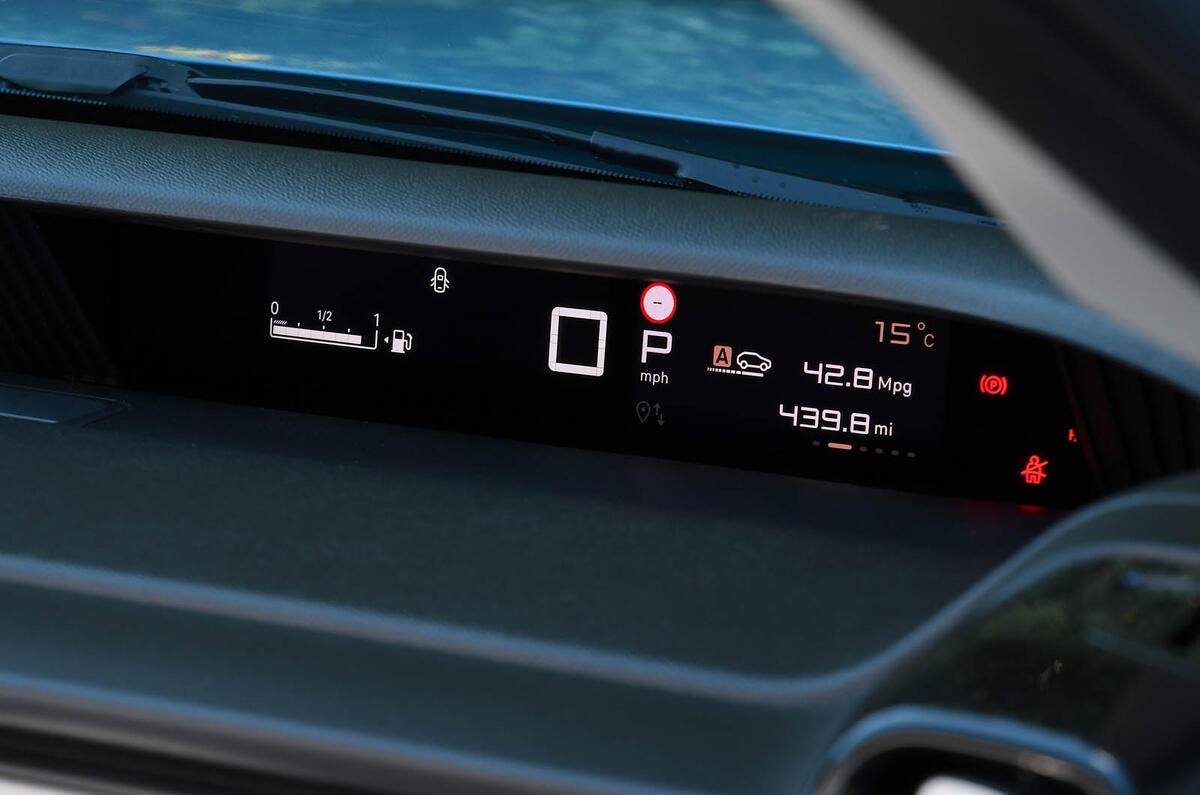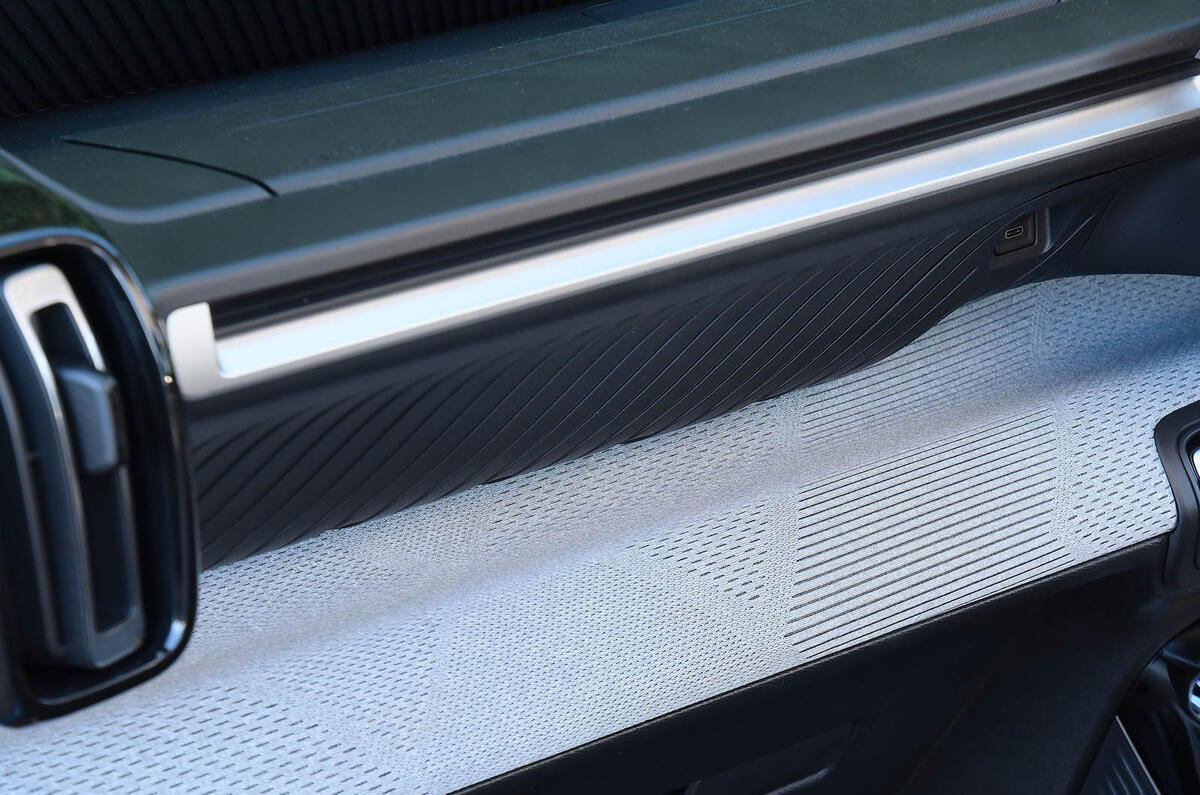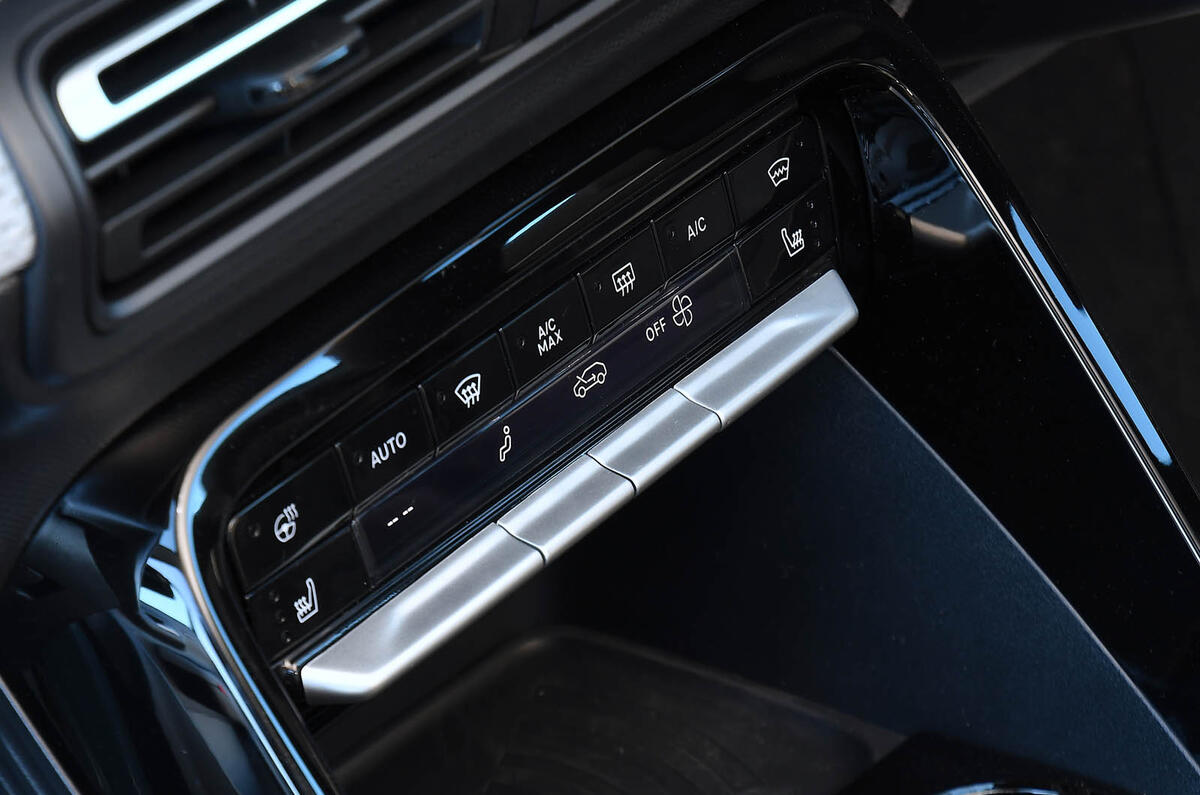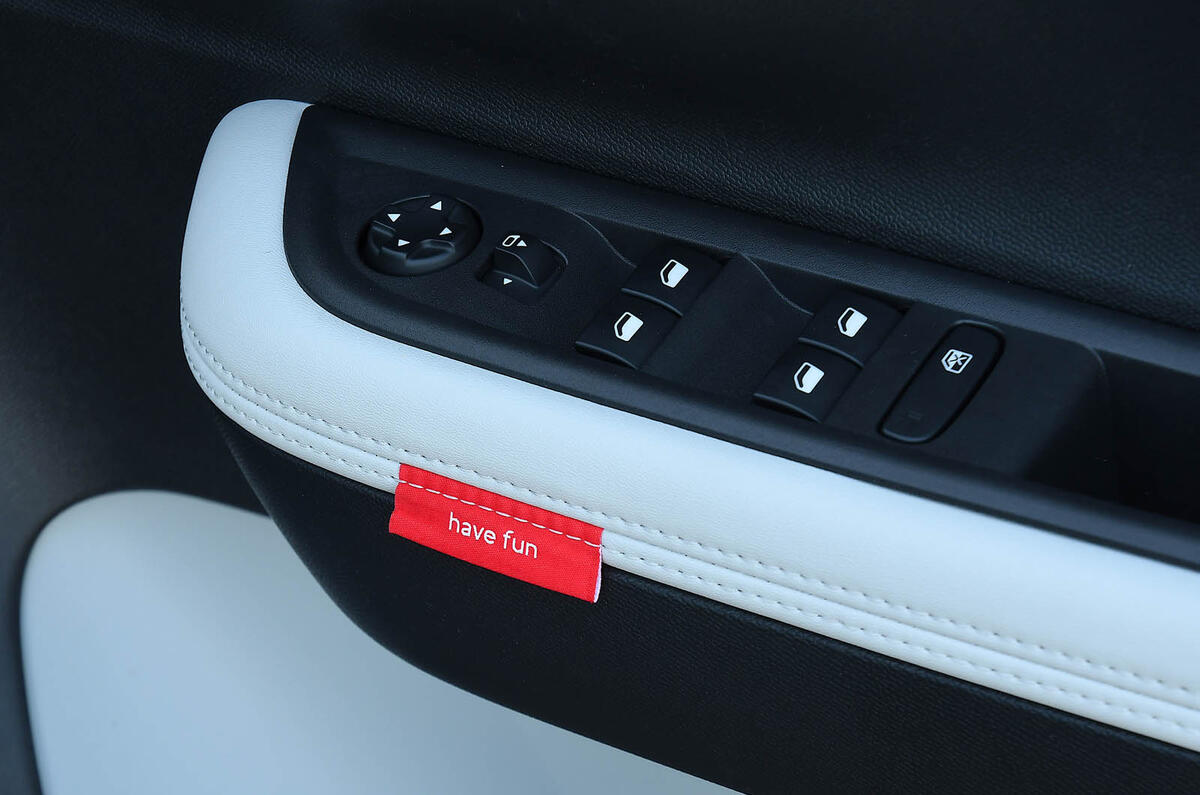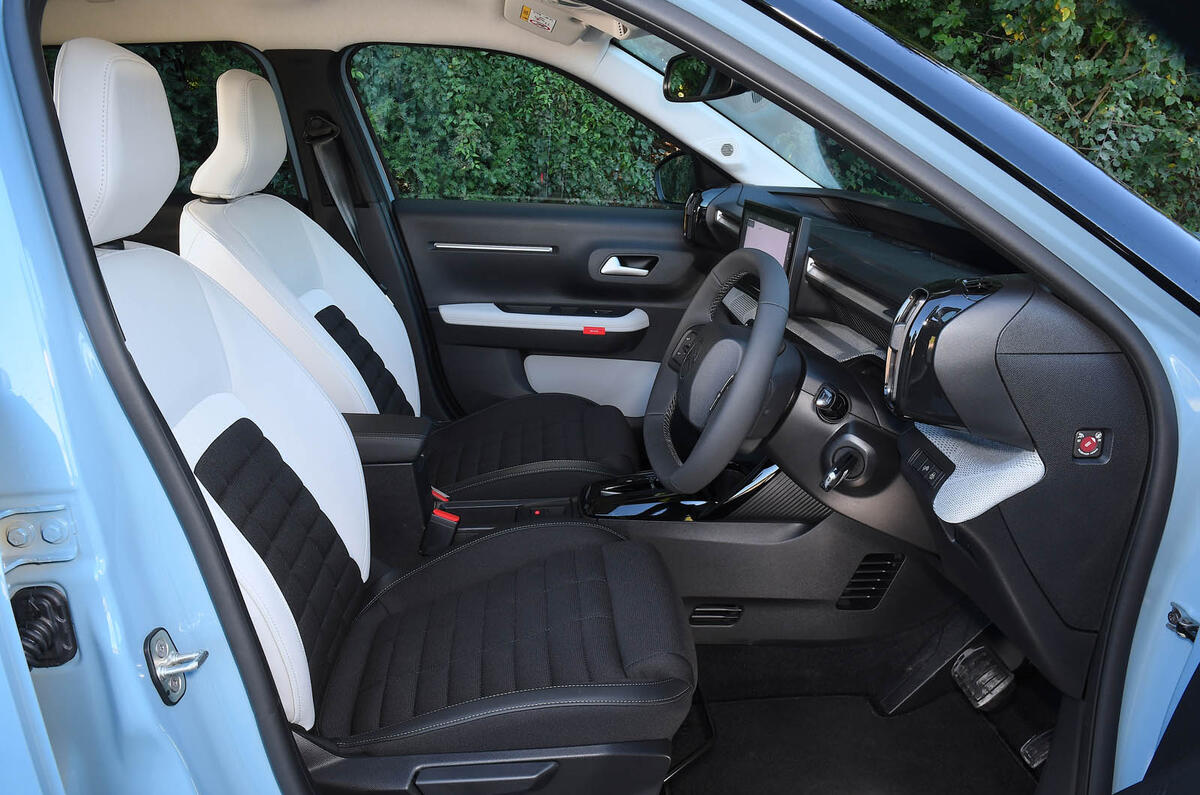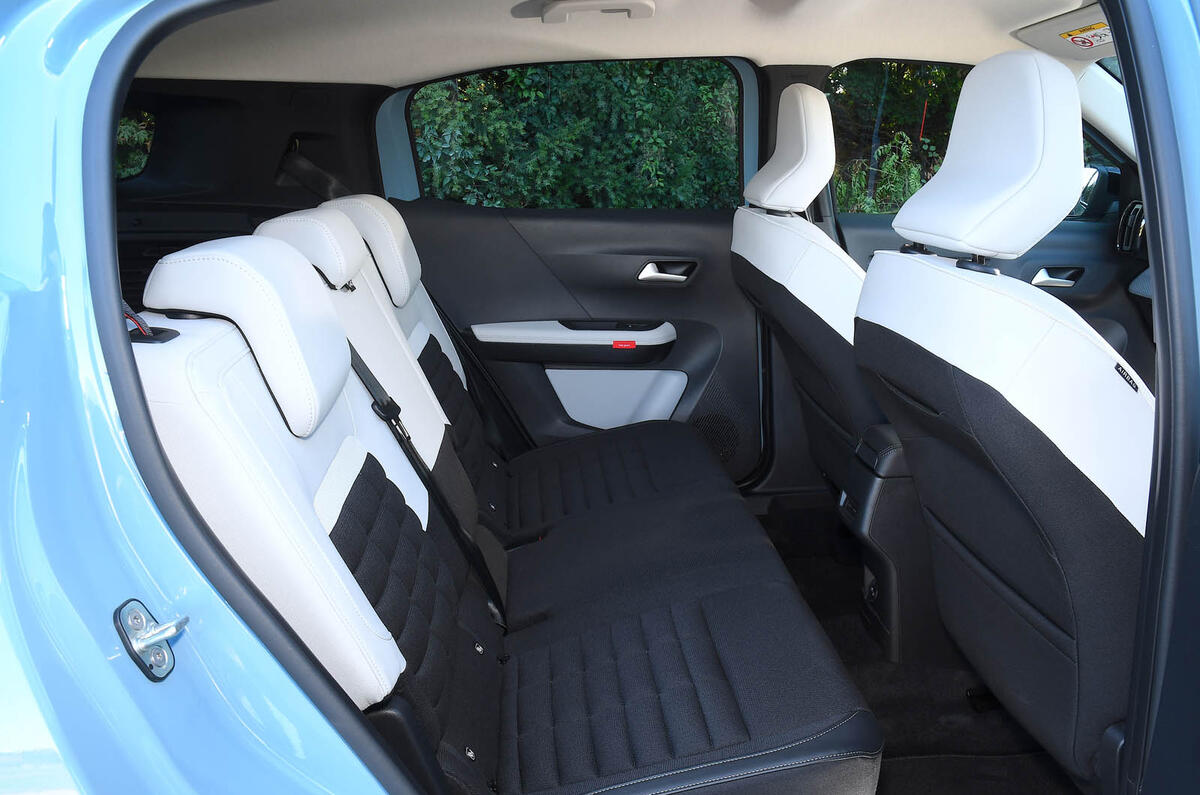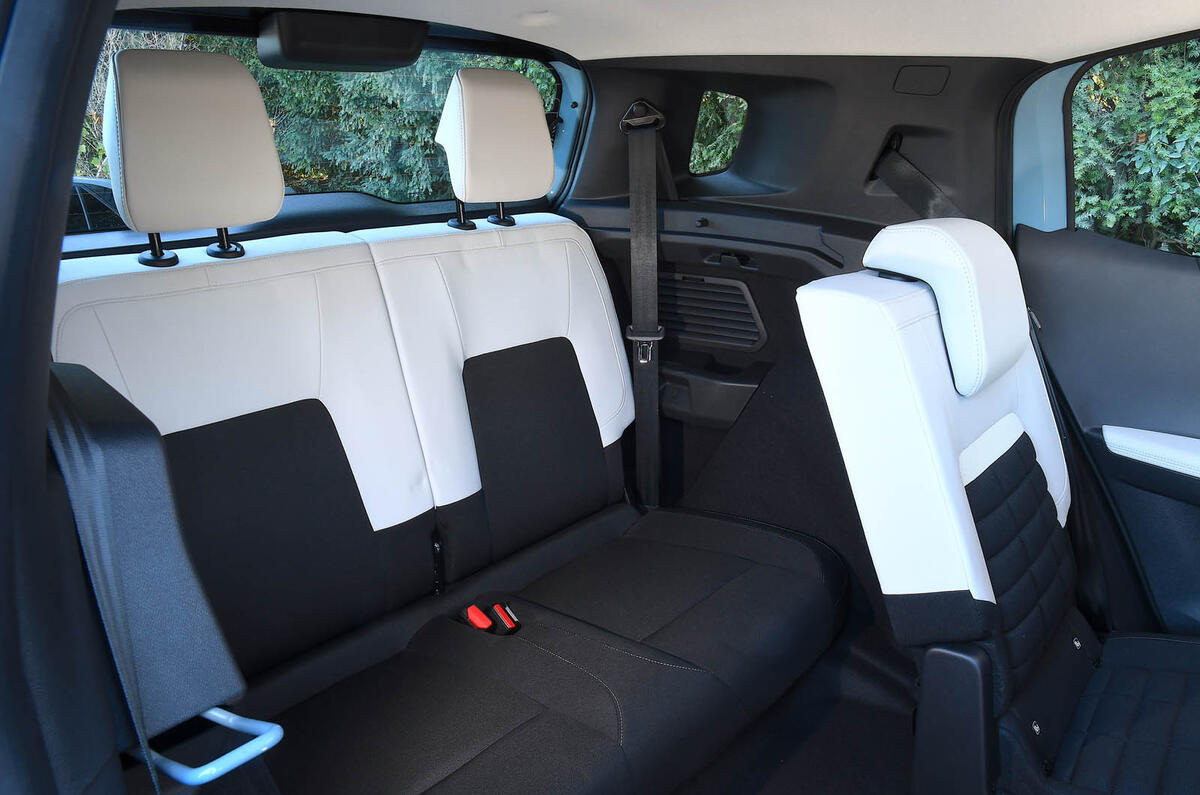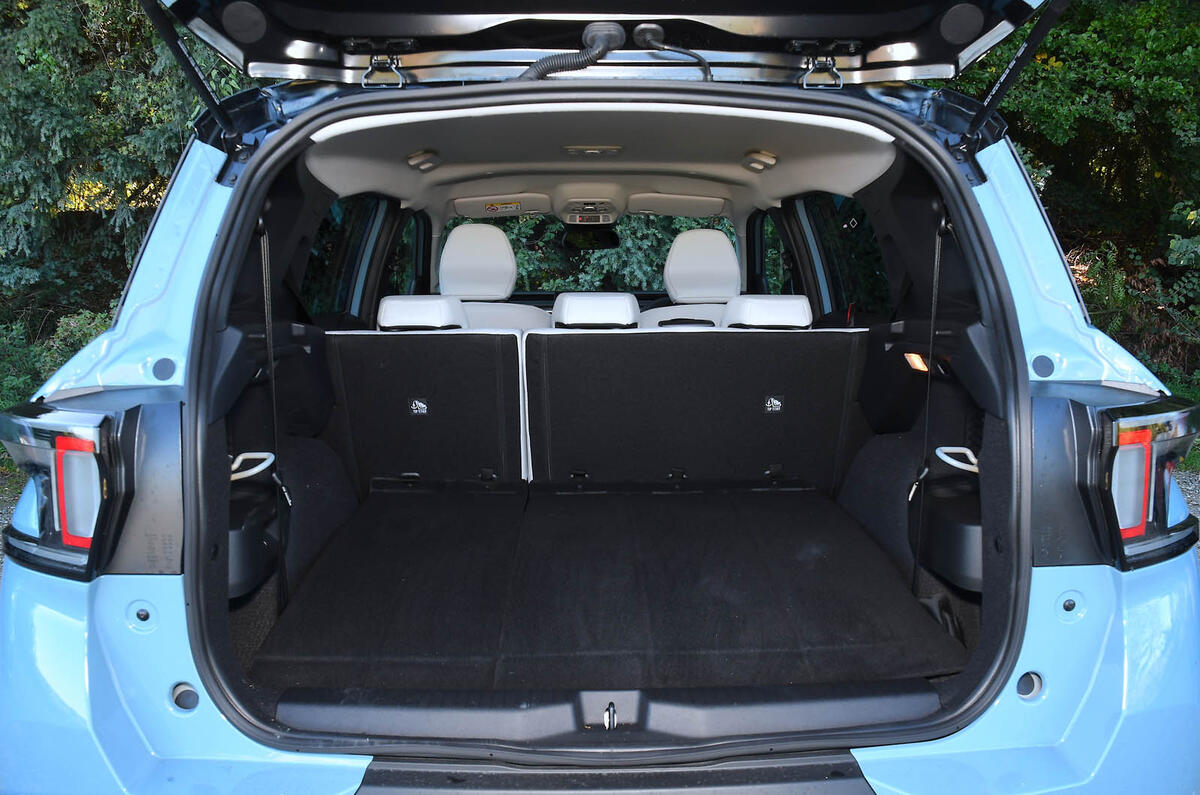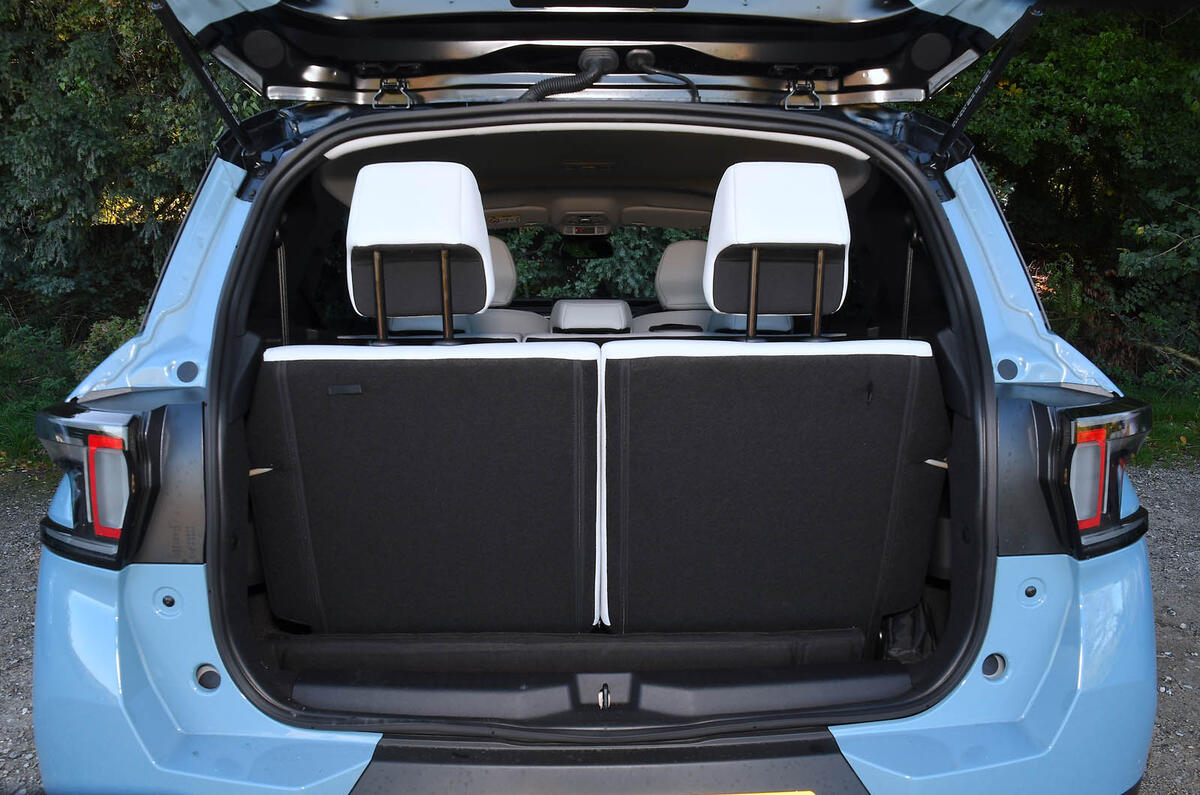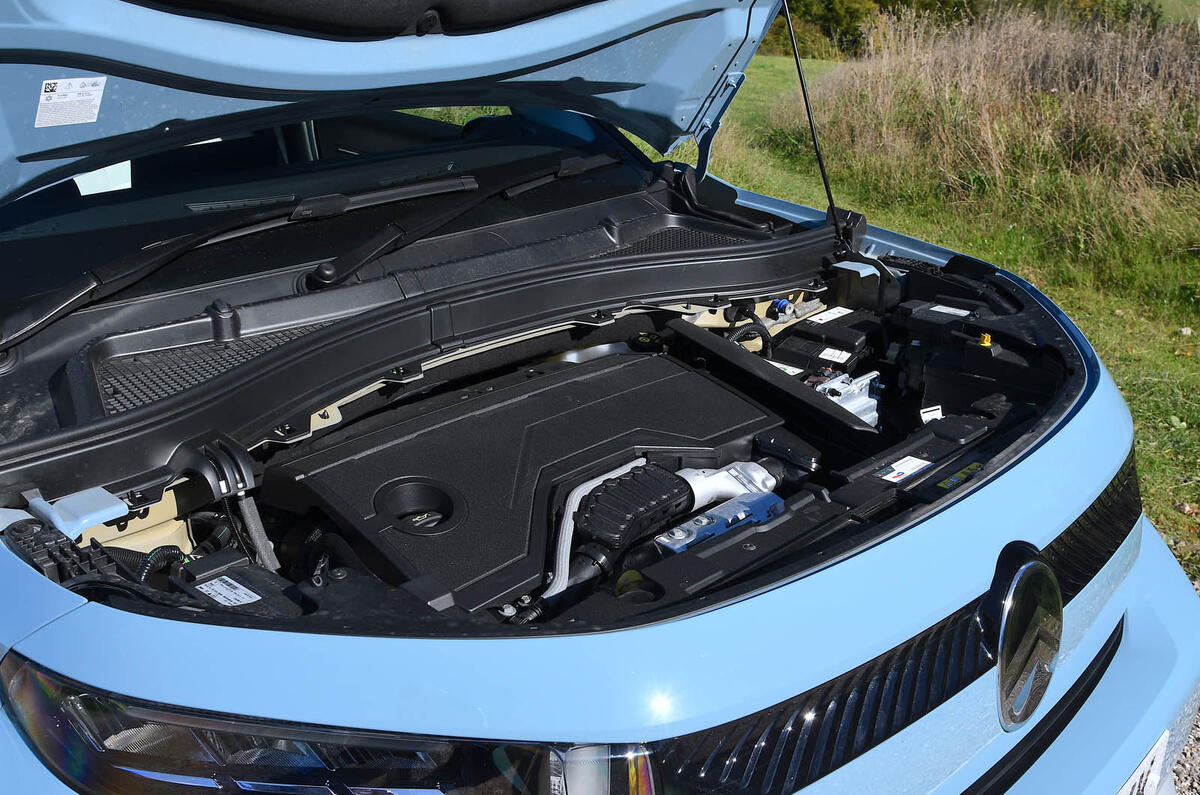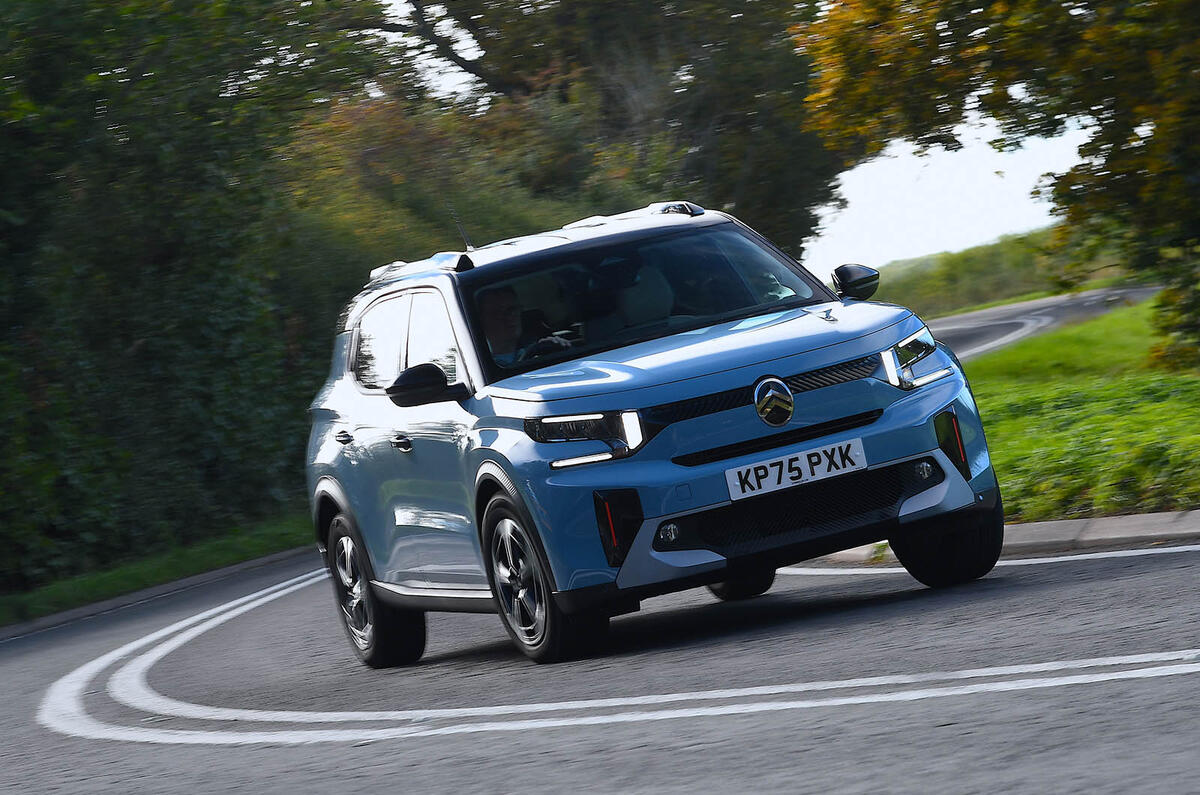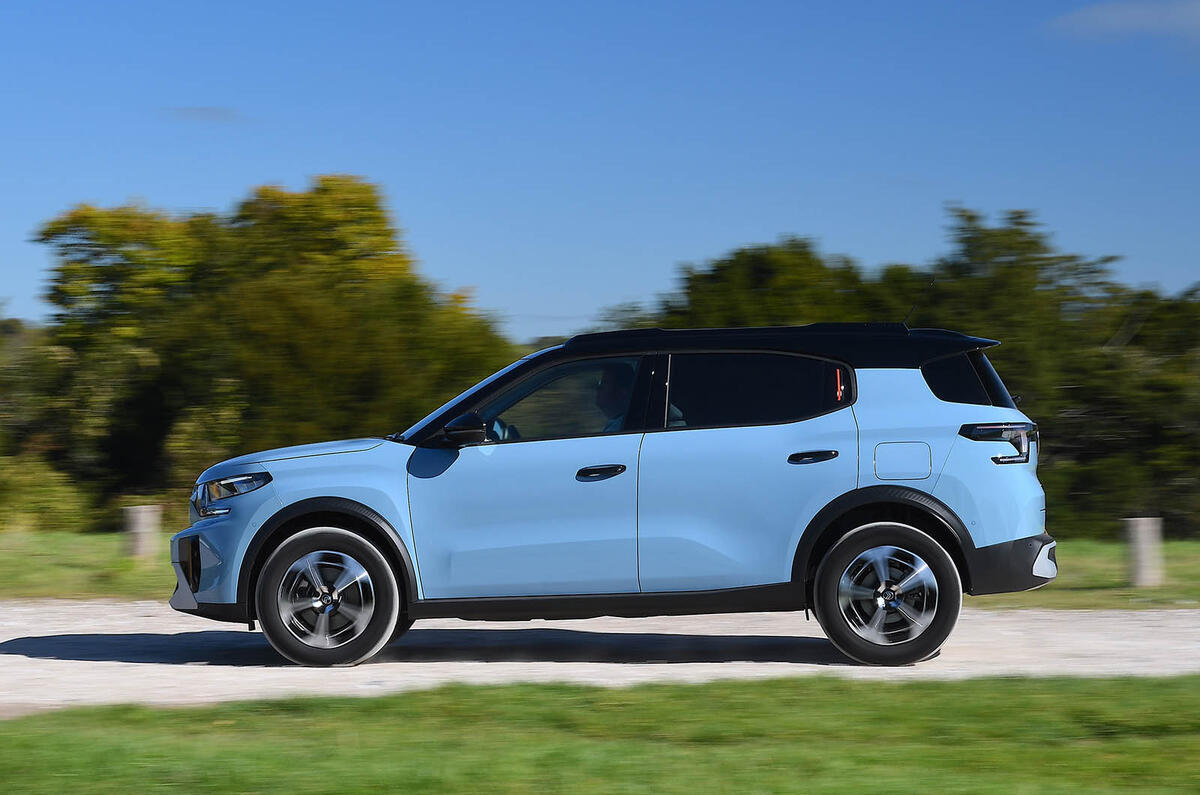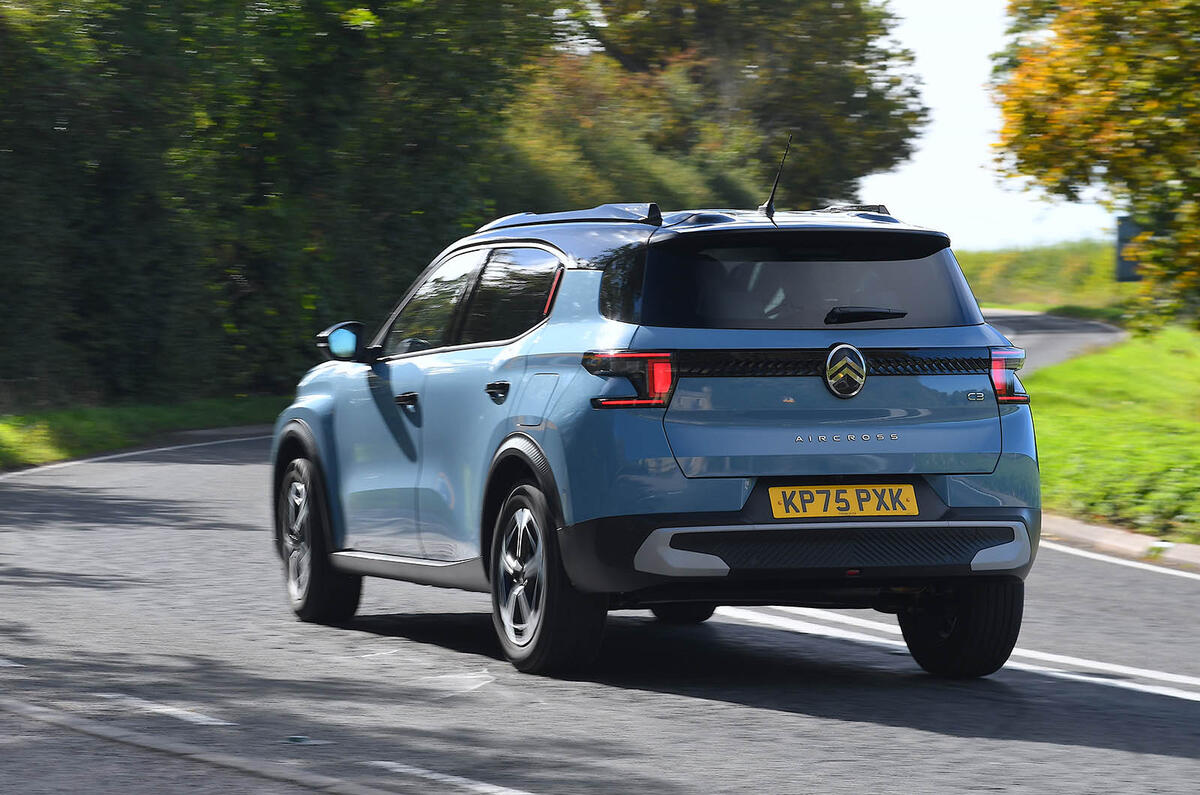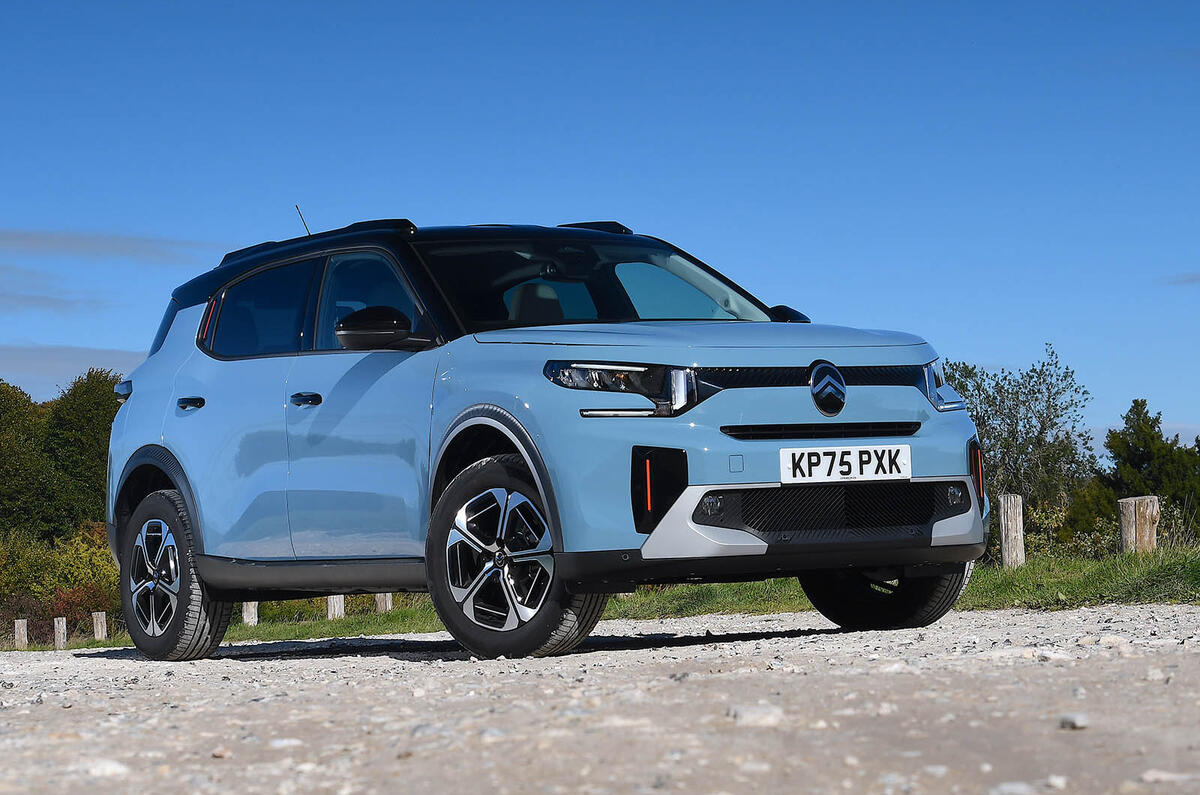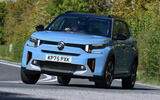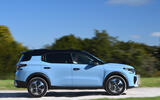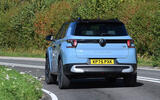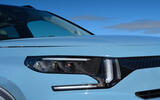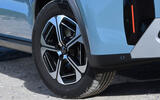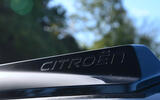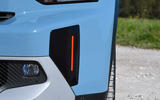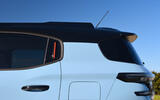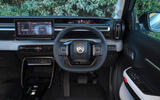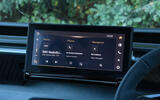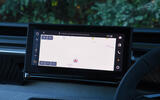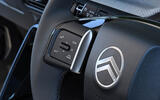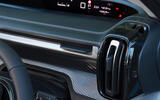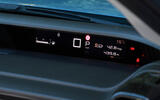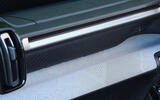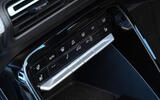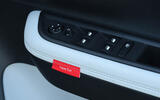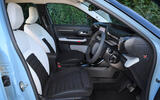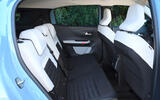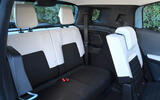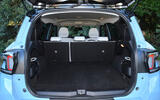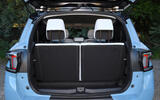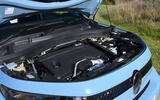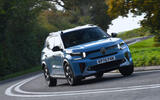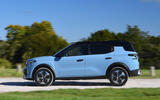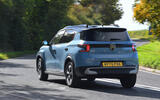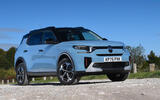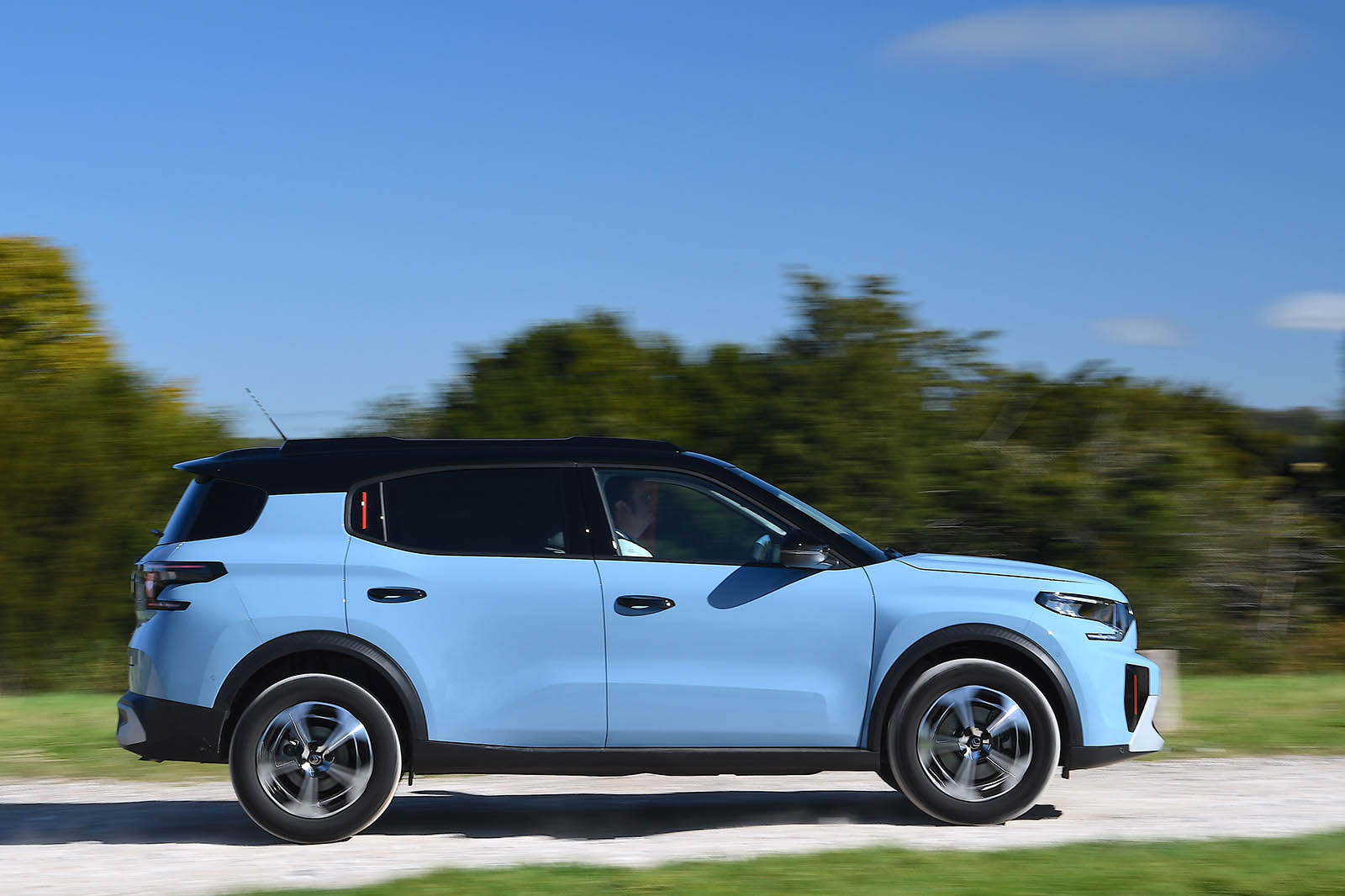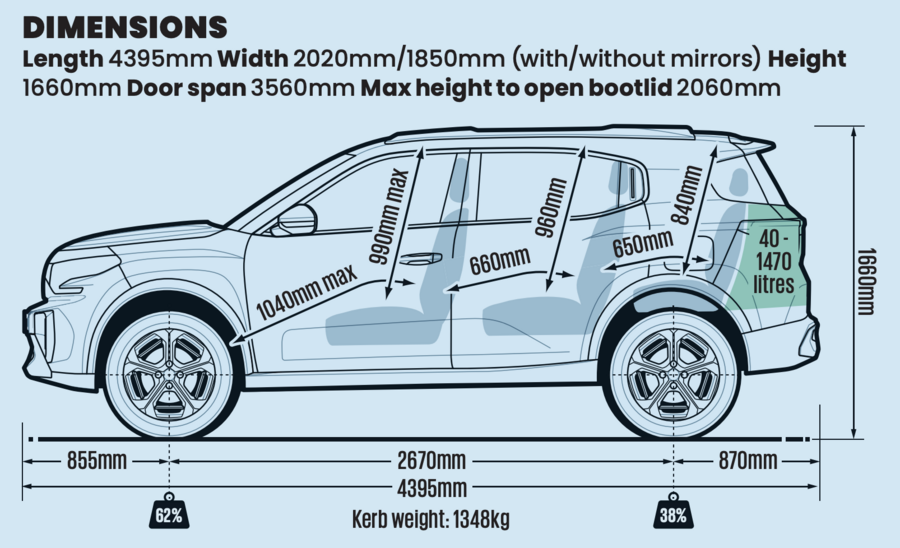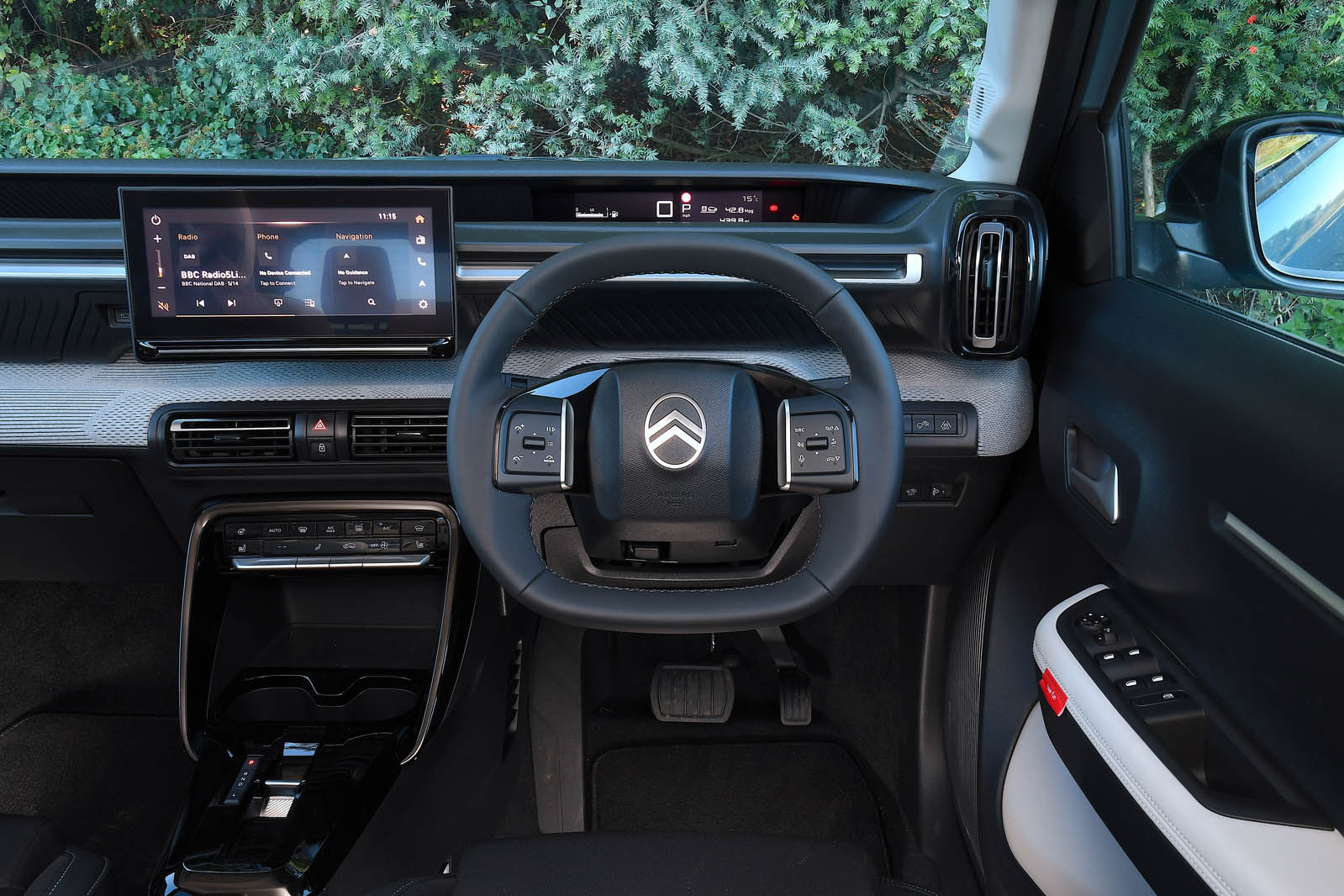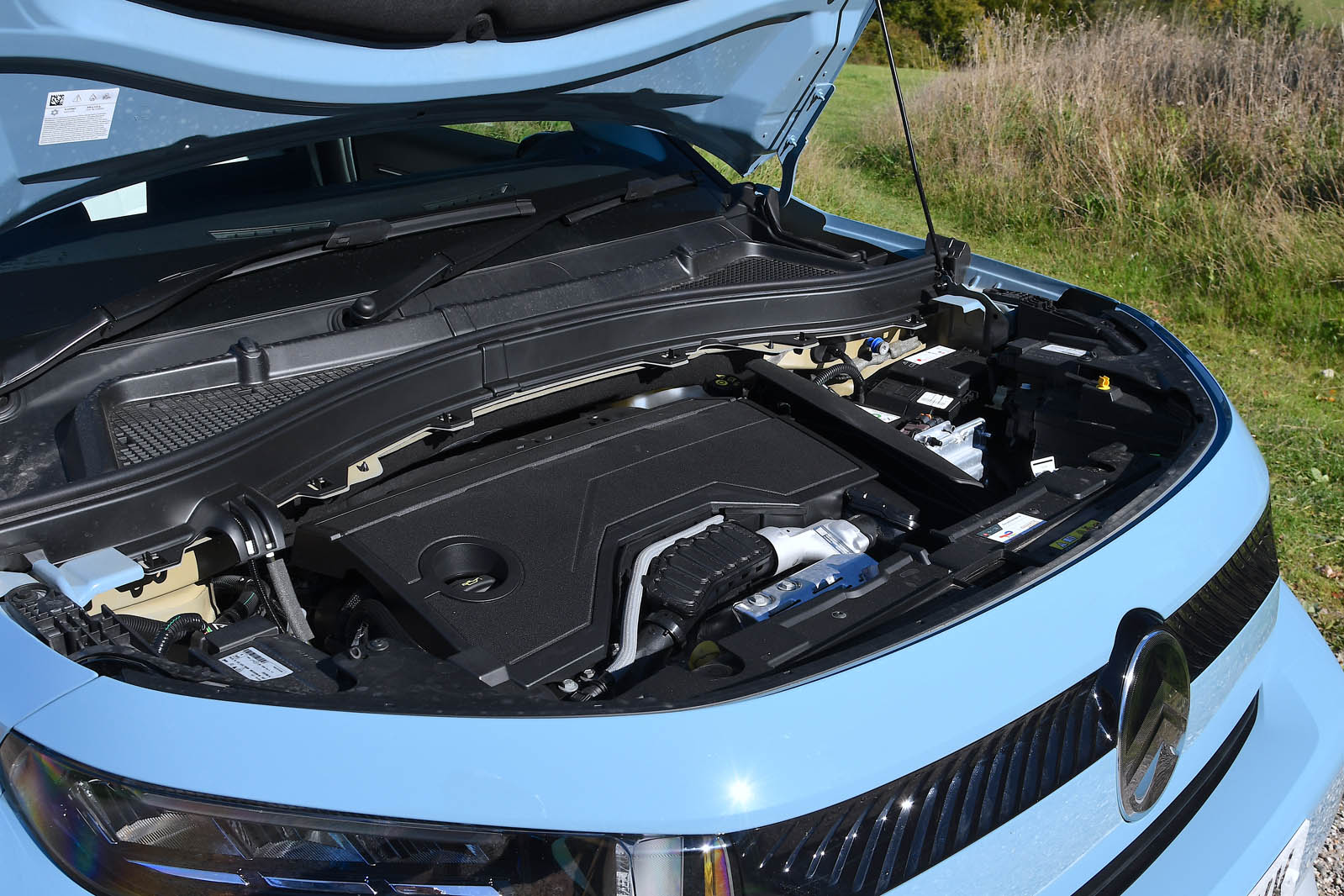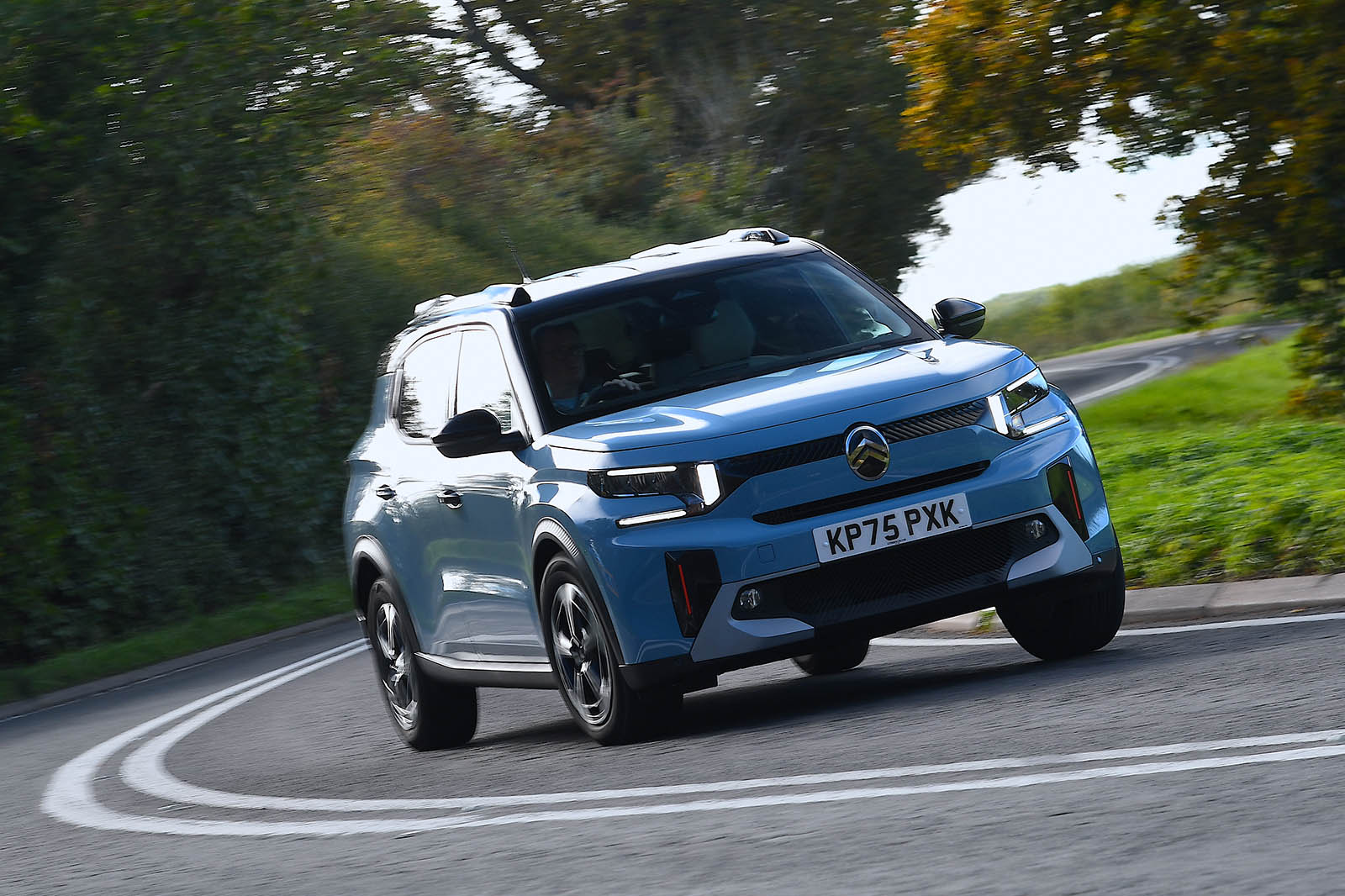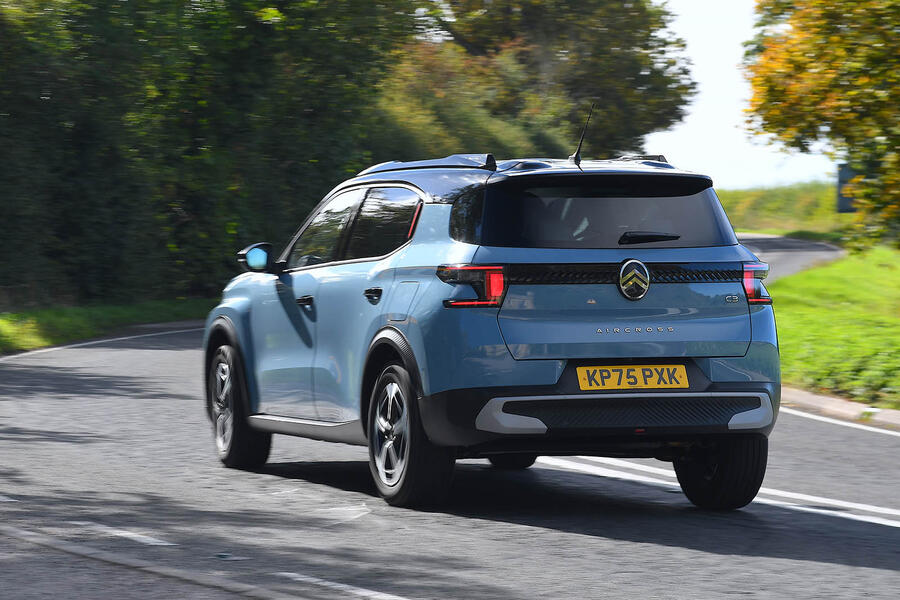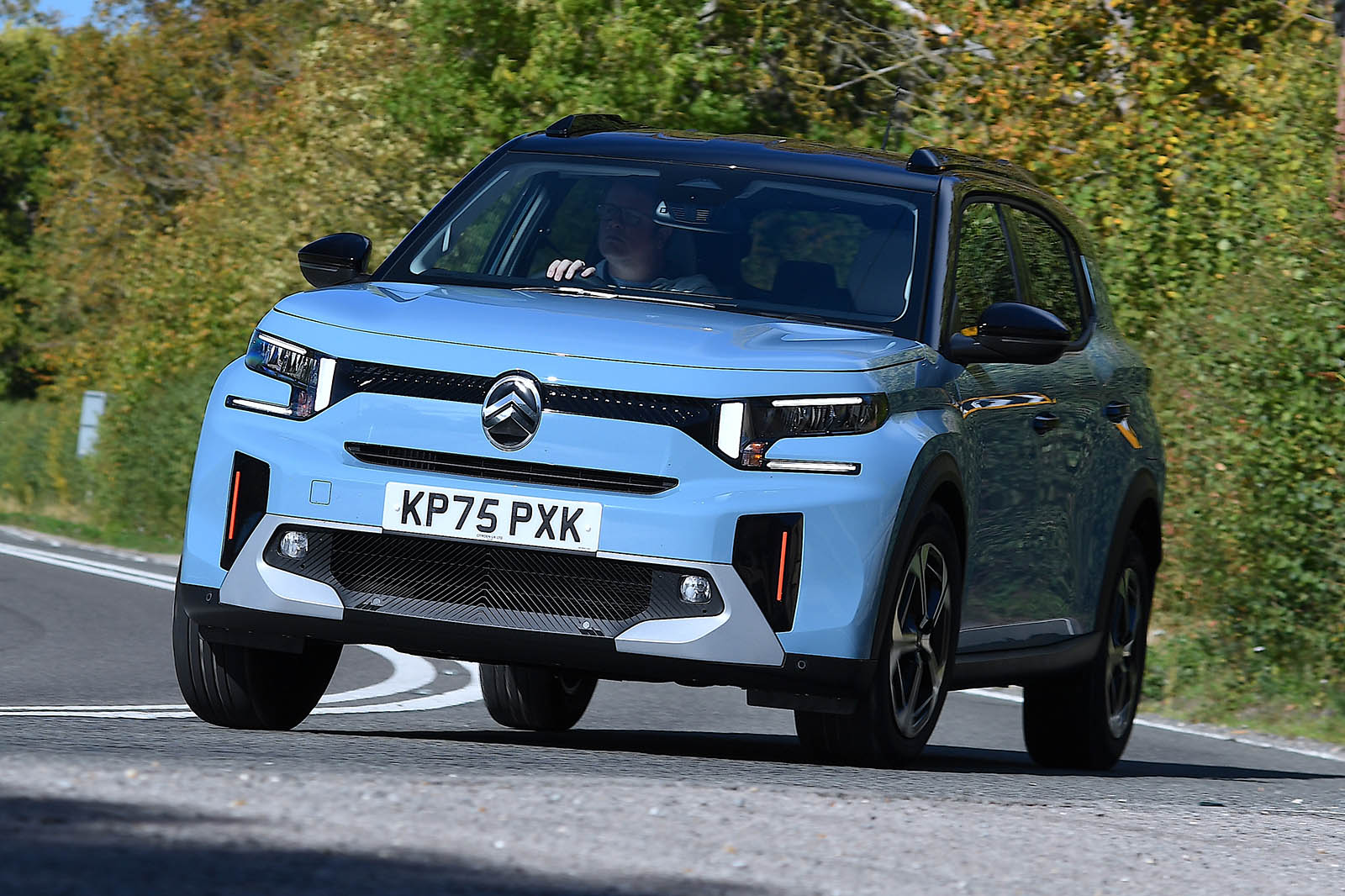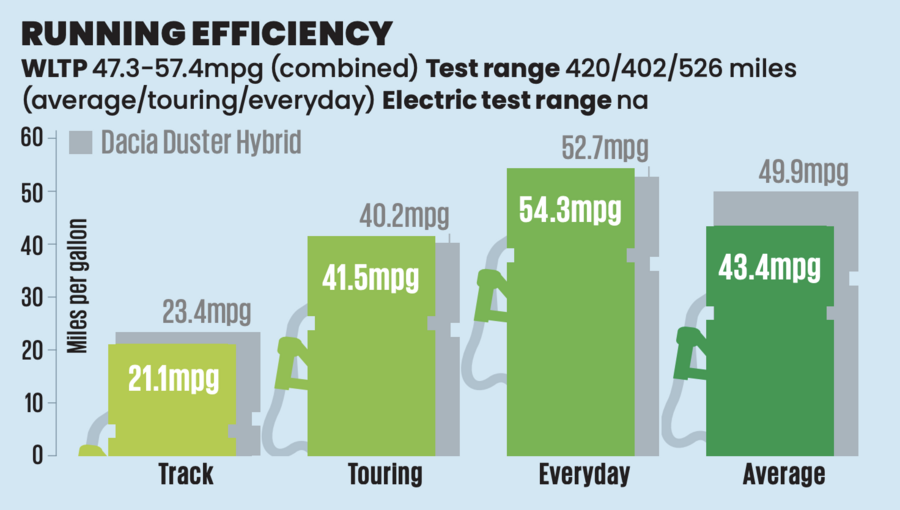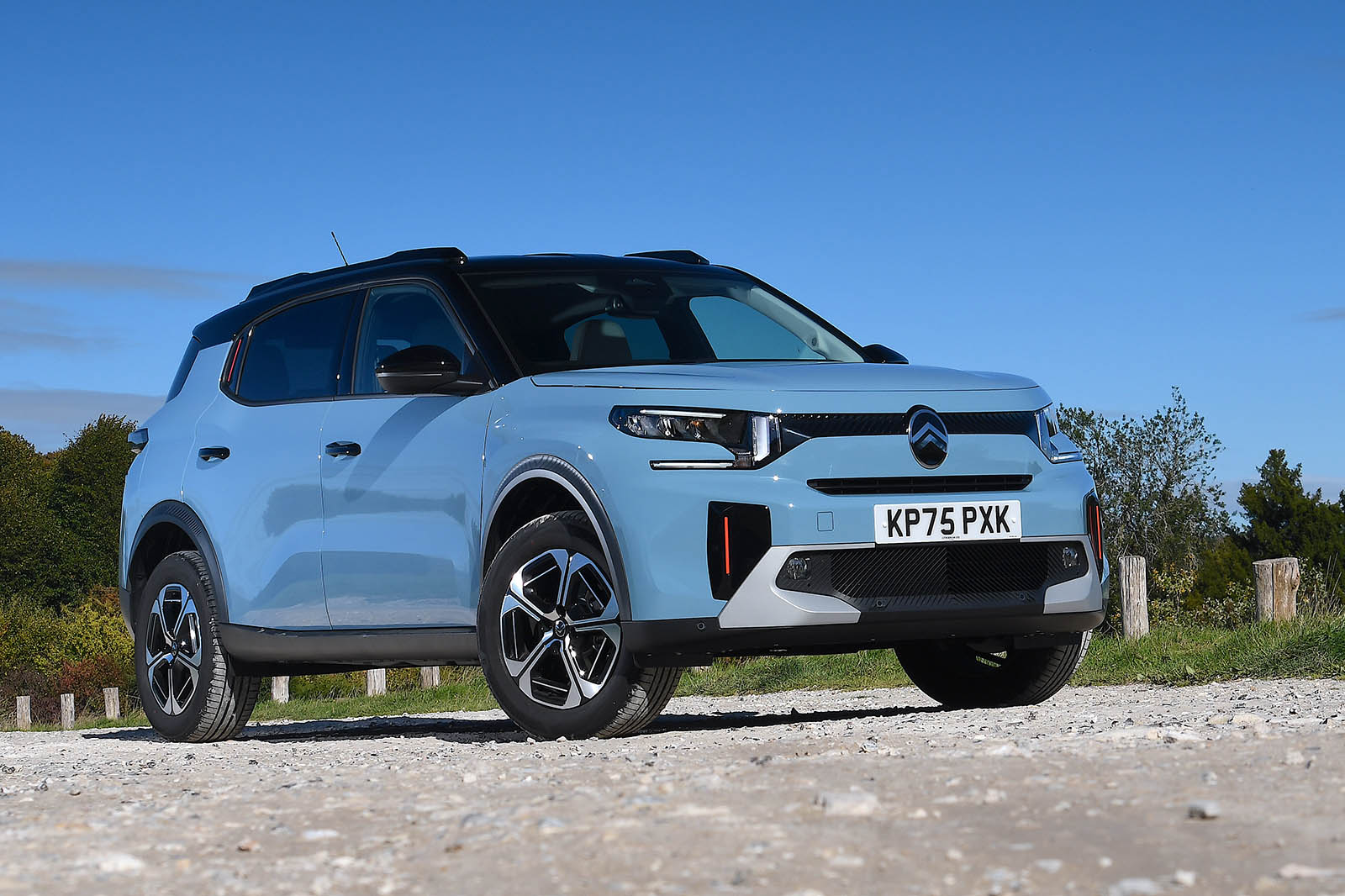The C3 Aircross’s practicality calling card may well be those optional third-row chairs, but customers should be careful to consider what kind of practicality they actually need before hastily adding them.
Our Hybrid 136 test car had them, and they fold flat into a space roughly the size of what might otherwise be an under-floor boot compartment. But folding them down leaves a boot of only 300 litres up to the window line, reduced from 460 litres in the case of the equivalent five-seater car – so a significant trade-off. In terms of volume, that’s actually less under-shelf cargo space than most regular superminis offer (although the Aircross’s boxy upper body would be likely to reverse that relationship for outright, loaded-to-the-roof capacity).
There are other compromises in the boot of the seven-seater. Citroën provides only a fairly flimsy covering for the folded third row to serve as a kind of boot floor, which clips onto the second-row seatbacks – but wouldn’t stop smaller items from rolling around and beneath it into hard-to-reach areas. There are also wide steel loop fixings that the third-row seatbacks connect to when in place, which when the seats are down would reduce the boot’s maximum loading width to less than 900mm. When all seven seats are in place, almost no boot space is left. Citroën claims 40 litres, but it’s really only enough to store that flimsy boot floor covering.
How usable is what you’re getting in return: the third row of seats? To be fair to Citroën, the seats themselves offer no less space than many typical smaller seven-seaters – enough for smaller children on booster seats (typically for these cars, there are no Isofix points for row three), but not really for those of secondary school age. Anyone back there has only limited foot space – but there are proper cupholders and a USB-C wired charging port. The rear-most side windows are puny, so it also feels slightly claustrophobic.
Row two is roughly class-typical (the Dacia Duster and Renault 4 offer slightly less leg room but more head room), but the five-seat Aircross’s second-row chairs are mounted 65mm farther to the rear (there are no sliding seats here, except in the front), meaning more leg room, and they also recline, improving head room. This car is therefore ready to cater to those who want a spacious five-seater with a bigger boot, or a less-spacious-feeling seven-seater with a smaller boot. Even in the seven-seater, the most commonly used passenger seats should feel adequately roomy for average-sized adults.
Behind the wheel, you’re greeted by the same upwards-projected, head-up-display-style digital instruments as the regular C3 uses. It’s a touch sparse for useful information – there’s no rev counter at all – but very readable. Although the layout of secondary controls is likewise simplified, Citroën takes care to include physical blower controls (which we like), as well as physical buttons for the deactivation of the car’s key advanced driver assistance systems (speeding warning buzzer, lane keeping assistance).
The car’s 10.3in infotainment system is quite a basic one (wider adjustment of what ADAS features the Aircross has is done through the steering wheel controls and trip computer), but it’s not over-burdened with functions to manage. It is easy to navigate and includes wireless smartphone mirroring, which is what you are likely to use most of the time.
The car’s driving position, meanwhile, feels only slightly raised, but offers good visibility. The front seats are a little bit flat and lacking in lateral support, but are fairly softly padded.
Where material quality is concerned, the cabin is made mostly of hard mouldings that don’t appeal much to the touch but aren’t shiny and don’t mark easily either, so aren’t especially offensive. Textile trims are used in a few places to add a richer note, and fairly effectively.
